The Panasonic Z85A is a basic OLED model from the Japanese manufacturer that fully utilises the potential of its panel. Thanks to OLED technology, we can expect phenomenal image quality in the highest resolution – perfect blacks, excellent contrast, and great HDR effect, especially after professional calibration. Additionally, it supports a full set of HDR formats, so we can easily choose a movie in the best possible quality. Although Panasonic is usually associated with home cinema equipment, the Z85A performs just as well with sports and games. The 120 Hz panel, support for VRR, ALLM, and even functional Dolby Vision in games ensure smooth gameplay without motion blur. The sound is also commendable – although there isn't an impressive soundbar like in the model Z95A, it is still quite pleasant with noticeable bass. Downsides? Primarily the Amazon Fire TV – the operating system that still has teething problems. Many popular apps are missing, and some features are either unavailable or poorly translated (e.g., lack of support for external subtitles). Another issue is the not-so-high brightness, typical of older WOLED panels – in a brightly lit room, this can be a problem. Despite these shortcomings, the Panasonic Z85A is a great option for movie enthusiasts and gamers looking for a versatile TV with outstanding image quality and solid sound. If we can overlook certain system limitations and the less-than-optimal brightness, the Z85A still has a lot to offer. However, if full comfort of use and a richer app ecosystem are crucial for us, then it's worth considering other OLED TVs from competitors as well.
- Matching (Score)
- Our verdict
- TV appearance
- Where to buy
- Contrast and black detail
- HDR effect quality
- Factory color reproduction
- Color reproduction after calibration
- Smoothness of tonal transitions
- Image scaling and smoothness of tonal transitions
- Blur and motion smoothness
- Console compatibility and gaming features
- Input lag
- Compatibility with PC
- Viewing angles
- TV efficiency during daytime
- Details about the matrix
- TV features
- Apps
- Playing files from USB
- Sound
Panasonic Z85A vs LG OLED B5
Direct compare

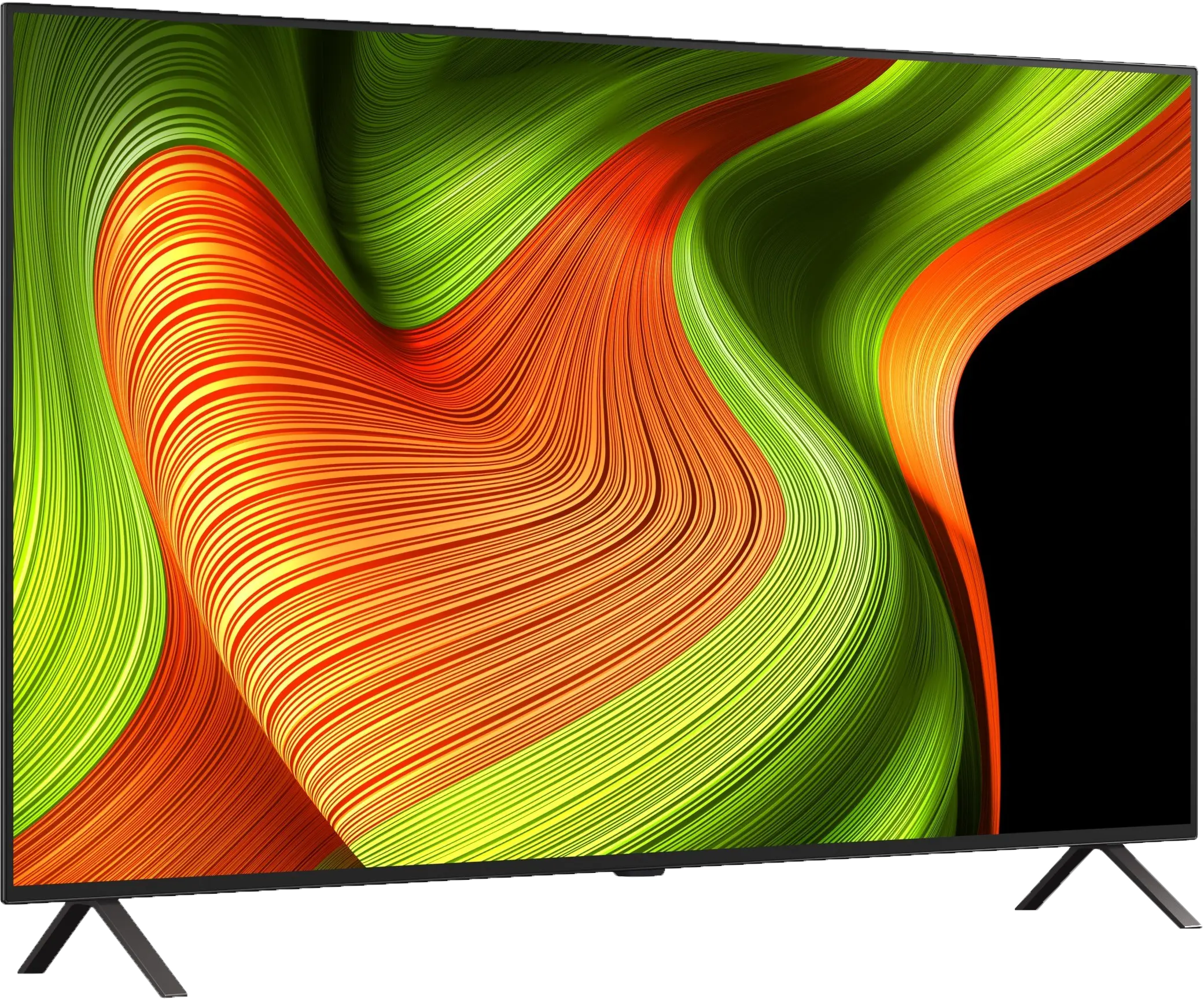
Panel type: WRGB OLED
Resolution: 3840x2160
System: Amazon FireTV
Model year: 2024
Complete the survey to find out the result

Panel type: WRGB OLED
Resolution: 3840x2160
System: WebOS
Model year: 2025
Complete the survey to find out the result

Overall rating
7.7
7.8
Movies and series in UHD quality
8.2
7.9
Classic TV, YouTube
8.7
8.6
Sports broadcasts (TV and apps)
8.5
8.5
Gaming on console
9.3
9.2
TV as a computer monitor
7.6
7.6
Watching in bright light
4.8
4.9
Utility functions
7.0
7.9
Apps
5.7
9.1
Sound quality
7.4
7.0
Complete the survey to find out what fits your preferences
Advantages
Perfect black and infinite contrast thanks to the WOLED panel
Great HDR quality with good coverage of the DCI-P3 colour gamut (98%)
Excellent picture quality after professional calibration
Full HDR package: HDR10, HDR10+, Dolby Vision
Low input lag: 5 ms (120 Hz) and 13 ms (60 Hz)
Support for ALLM, VRR, HGIG and Dolby Vision in games
Very good viewing angles
Smooth motion without blurring thanks to the 120 Hz OLED panel
Ability to record to USB and PiP function
AirPlay support
Pleasant sound quality with noticeable bass
Perfect black and contrast
Pleasant HDR image
Excellent colour reproduction capabilities
120Hz OLED panel - great motion smoothness
4 HDMI 2.1 ports and full support for gamers (VRR, ALLM, Dolby Vision Gaming, HGiG)
Very low input lag
Proper content scaling and good digital processing
Convenient webOS system with Magic remote
Built-in USB recording function from the built-in DVB-T/T2 tuners
Disadvantages
SDR brightness at 300 nits – too low for brightly lit rooms
The Amazon Fire TV system has a limited number of apps
Some system functions are poorly translated into Polish
No support for external subtitles in USB player
No support for DTS:X audio on the television
Average brightness and poor performance in bright rooms
No support for DTS formats
Different versions of the remote in derivative models – hard to predict which version we will get
Our verdict
LG B5 is a really good OLED TV that shows you don’t need to spend a fortune for very good quality. It offers deep blacks typical of organic panels, very good colour reproduction – especially after calibration – and pleasant HDR movie watching experiences. All of this makes for evening screenings that can deliver cinematic emotions even without reaching for much more expensive screens. The fluidity of the image and the set of features for gamers also deserve recognition. The 120 Hz panel, low input lag, full support for HDMI 2.1, variable refresh rate, and Dolby Vision Gaming mode make the B5 a very versatile screen – great for both gaming and watching sport. The friendly webOS system, along with the Magic remote, provides convenient access to content and makes operation easier. However, not everything is perfect. Compared to the B4 model, there is a slight drop in brightness, especially in very bright rooms. For some users, the lack of DTS audio support may also pose a problem, which could necessitate some workarounds when connecting Blu-ray players. Still, LG B5 remains one of the most sensible choices for those looking to step into the world of true cinema – without overpaying, but also without making major compromises. It’s a screen that doesn’t need to prove anything – it simply delights the eye with great picture quality and works as it should.
TV appearance




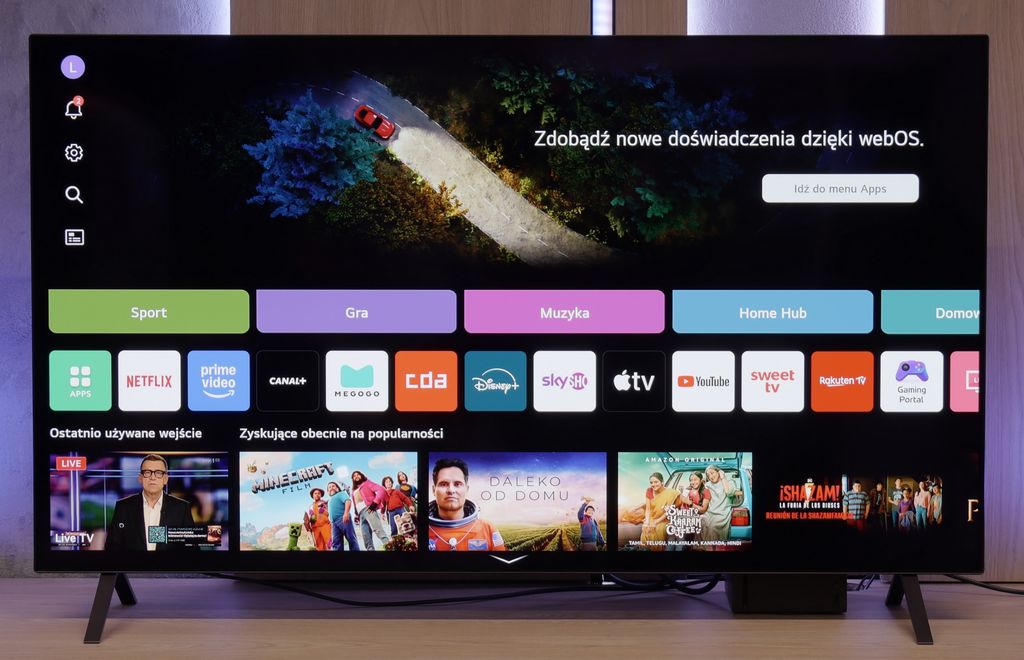
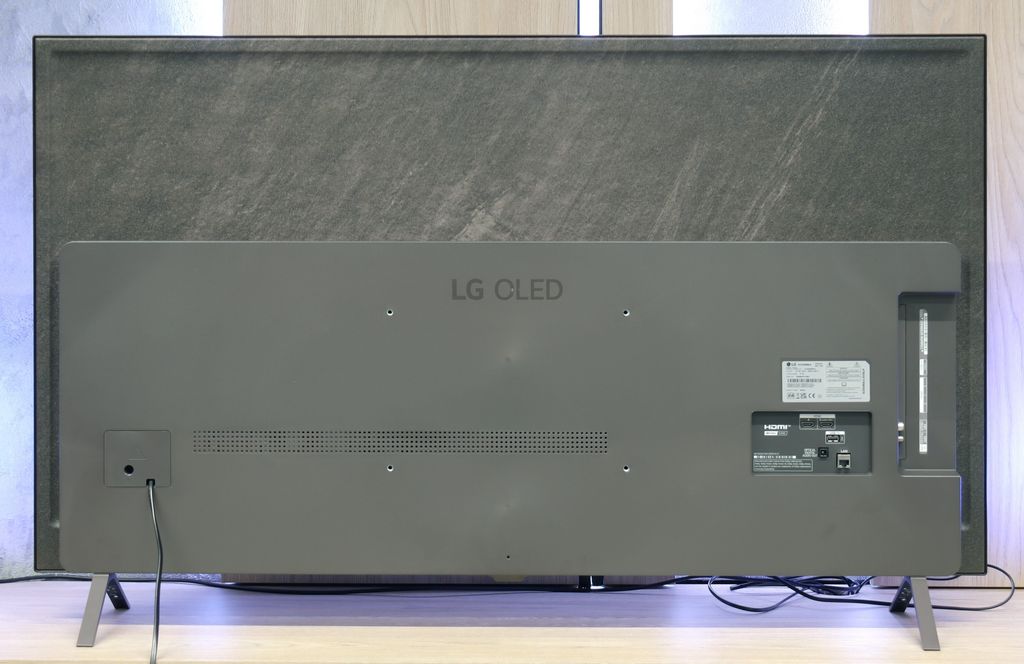
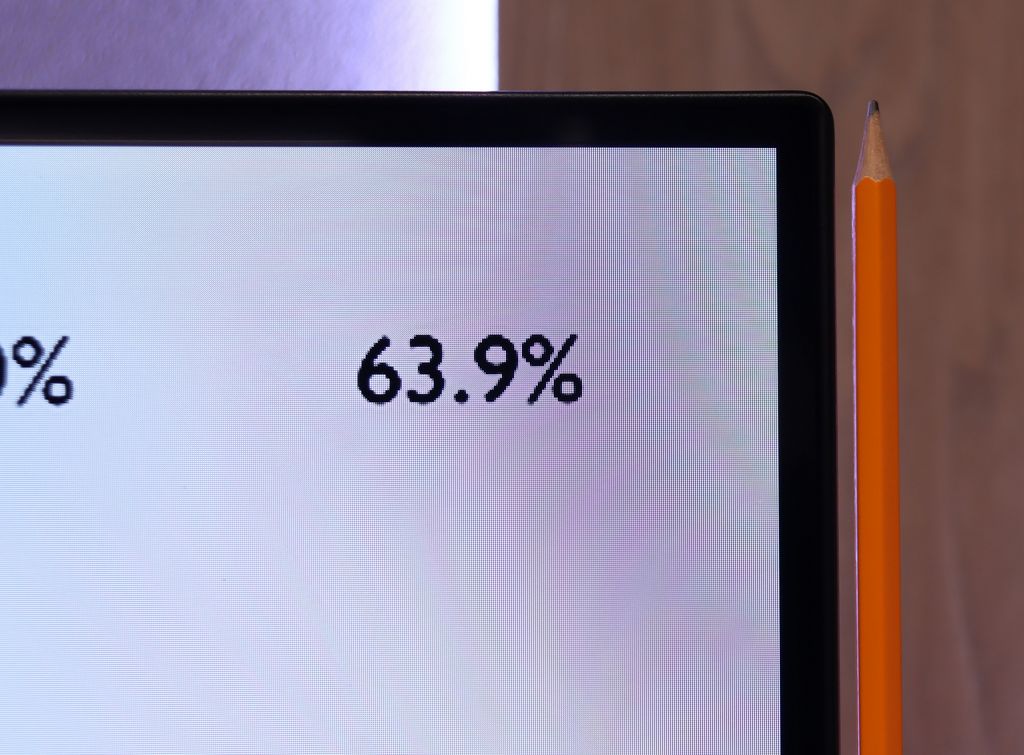
Contrast and black detail
10/10
10/10
Contrast:

Result
∞:1

Result
∞:1

Result
∞:1

Result
∞:1

Result
∞:1

Result
∞:1

Result
∞:1

Result
∞:1

Result
∞:1

Result
∞:1
Halo effect and black detail visibility:

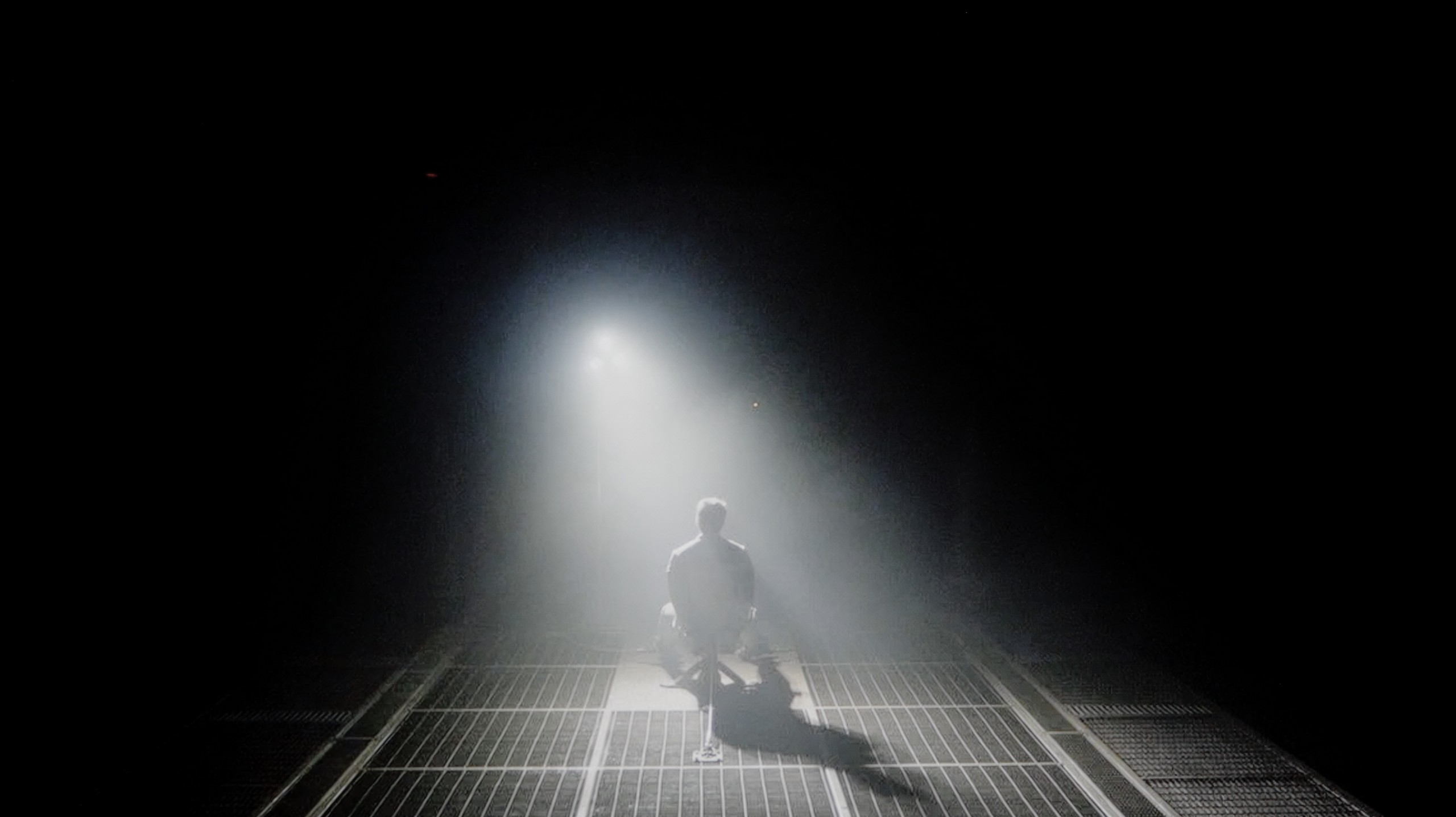
The Panasonic Z85A uses a WOLED panel, and that means one thing – perfect blacks and infinite contrast. Each pixel lights up and turns off independently, so there’s no smudging or halo effect around bright objects on the screen. Even in the most demanding scenes, the picture looks simply exemplary. In this regard, there’s no room for compromises, which are still present even in the most expensive LCD televisions. Here, Panasonic shines, utilizing organic technology supplied by LG Displays, and does so in truly impressive style.
If you're looking for changes compared to last year's LG B4, we’ll clear up any doubts straight away – you won’t find any in this category at all. And that’s a good thing. Because how do you improve something that is already close to perfection? The LG B5, as a WOLED organic panel television, offers black scenes as dark as tar and contrast that’s hard to find even in the most expensive LCD screens. The screen is as clear as a bell – no bleeding, no streaks, no halo effects that can ruin the atmosphere in cinematic scenes. Here, everything is in its place. Details separate from black with surgical precision, nothing blurs together, even in the most demanding sequences from films like The Revenant or Oblivion. This is the type of television that can truly enchant you, especially when the room goes completely dark. When the lights go out, the LG B5 takes centre stage – and it does so wonderfully. In these conditions, OLED shines the brightest, and even top-end LCD models – despite advanced dimming and hundreds of zones – simply fall behind.
HDR effect quality
6.5/10
6.2/10
Luminance measurements in HDR:

Result
812 nit

Result
775 nit

Result
812 nit

Result
808 nit

Result
390 nit

Result
587 nit

Result
593 nit

Result
628 nit

Result
589 nit

Result
470 nit
Scene from the movie “Pan” (about 2800 nits)

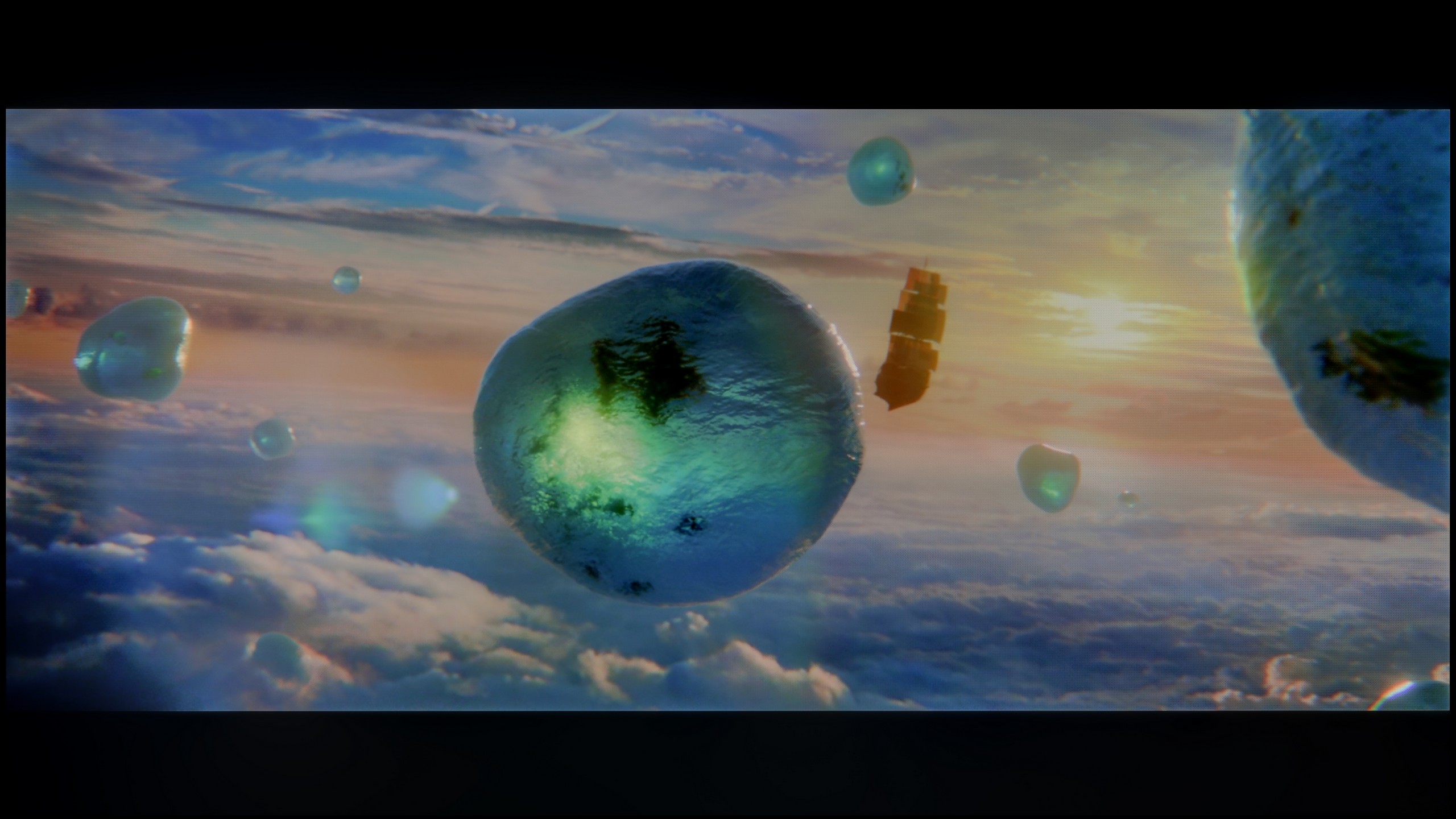
Scene from the movie “Billy Lynn” (about 1100 nits)


Static HDR10


Dynamic: Dolby Vision
Dynamic: Dolby Vision


HDR luminance chart:
LG OLED B5
Luminancja HDR
Luminance of RGB colors
Panasonic Z85A
Luminancja HDR
Luminance of RGB colors
The Panasonic Z85A is an OLED television, so you can immediately expect excellent effects in films. And indeed – our tests showed that the WOLED panel can achieve around 800 nits of peak brightness in optimal conditions. This is a solid result, performing well in most demanding HDR scenes, allowing viewers to enjoy a dynamic and detailed picture. However, like every OLED, the Z85A also has its limits. In very bright scenes that fill the entire screen – like the final sequence from the movie The Meg – the television reduces brightness to around 400 nits. This is standard behaviour for this technology, so if someone plans to watch films in a heavily sunlit living room, it is worth keeping this in mind. The coverage of the DCI-P3 colour gamut at 98% also deserves high praise. This allows the television to reproduce a wide range of colours that stand out with vibrancy and depth, while details in HDR scenes are sharp and precise. In short – the Panasonic Z85A delivers a solid HDR effect that will satisfy any film enthusiast.
LG B5 is a moderately bright OLED TV. Regardless of the scene – it can generate about 500 nits of peak brightness. And interestingly, it does this even in full-screen shots flooded with white, where most OLEDs usually struggle. So, is this screen suitable for HDR films? Yes – absolutely, because such brightness really allows you to feel the magic of HDR effects. However, it’s worth noting that compared to last year's B4 model, the new B5 is darker – by about 100 nits. It may seem like a small amount, but at such average peak values, it makes a significant difference. Fortunately, the TV makes up for it with another strength – excellent coverage of the DCI-P3 and BT.2020 colour gamuts. This means HDR films look truly vibrant, lively, and impressive even in more demanding scenes.
Factory color reproduction
8.4/10
8.2/10


Factory Mode
After calibration
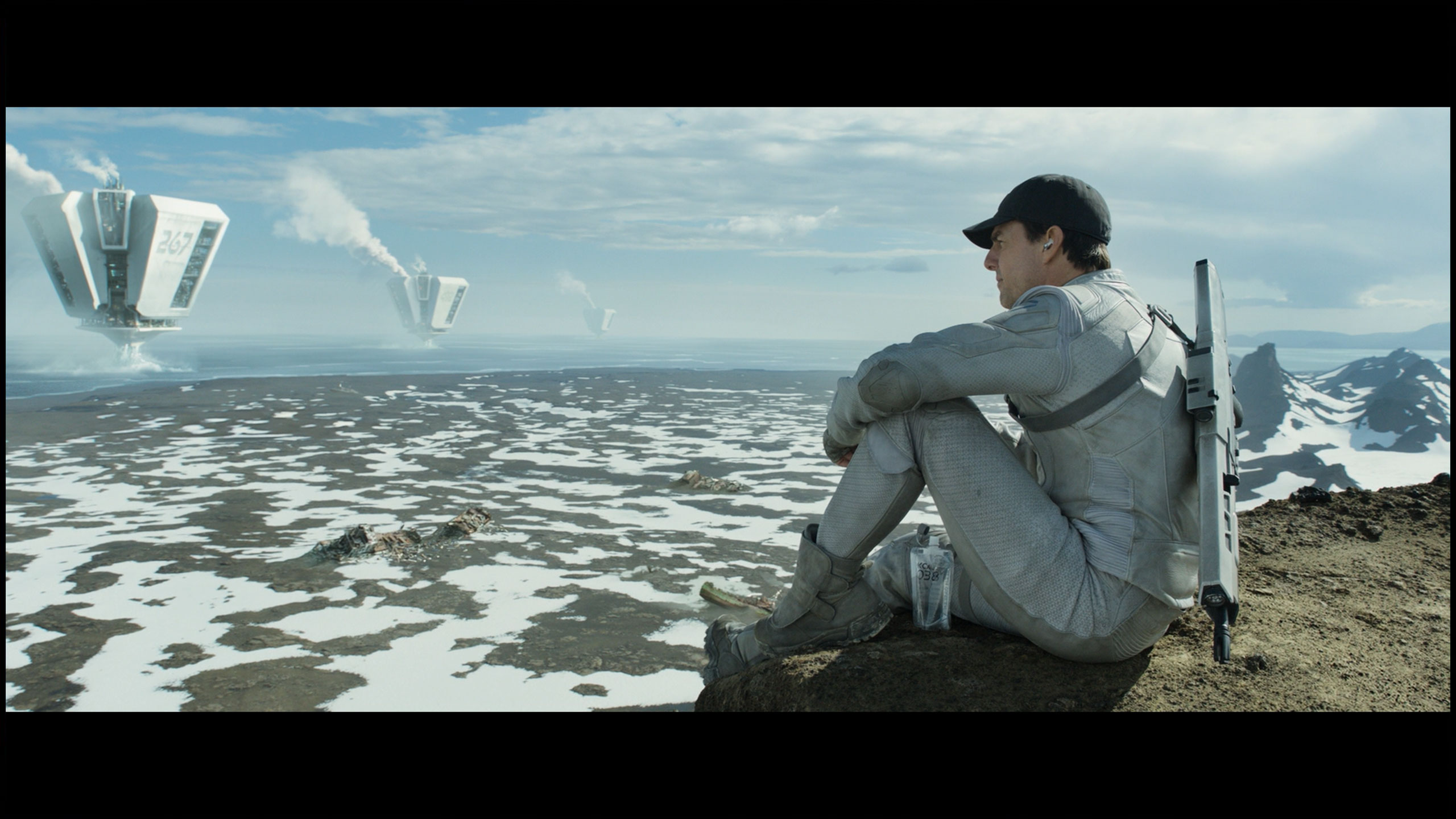
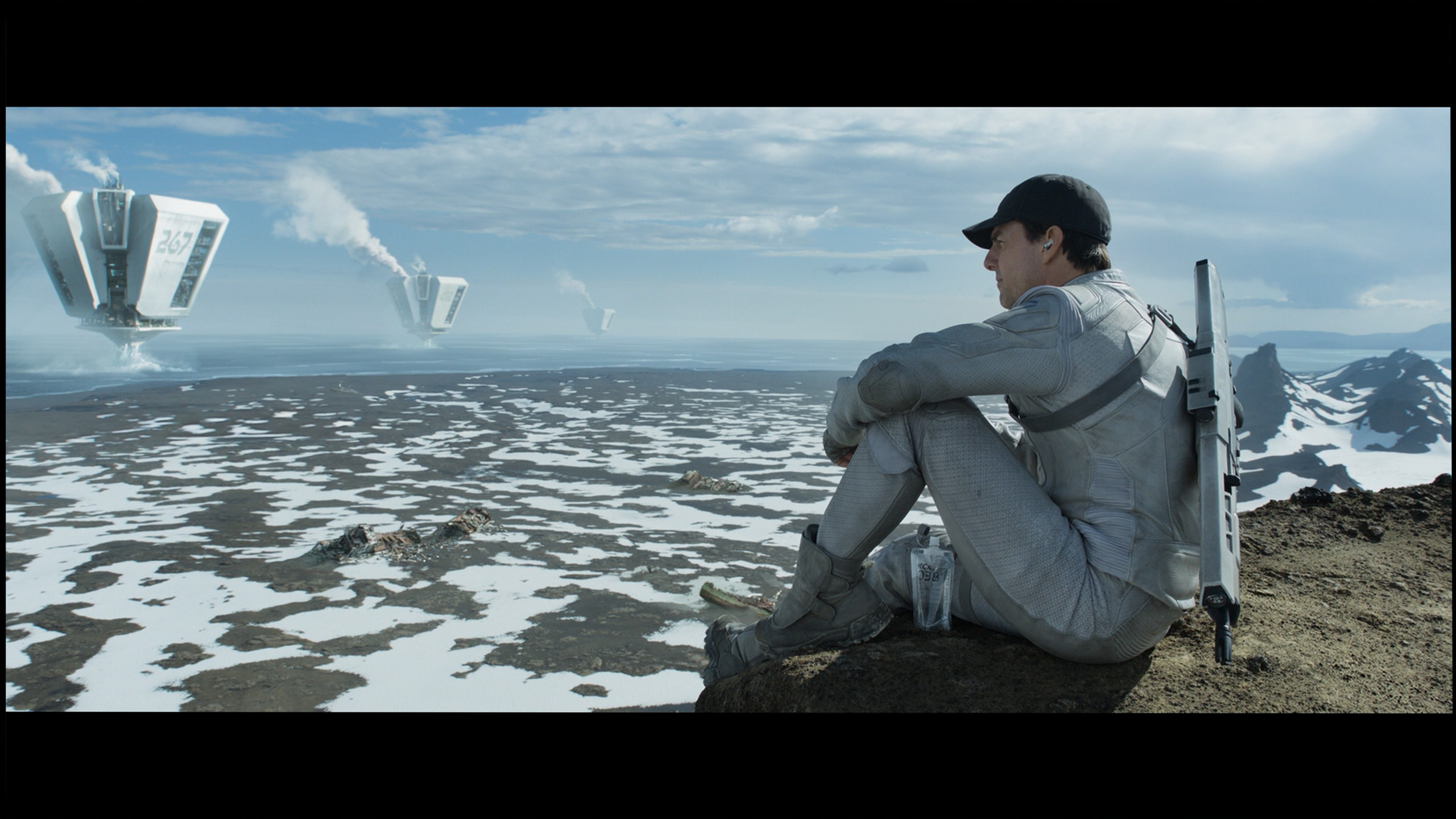
Factory Mode
After calibration
The Panasonic Z85A offers many picture modes, but the Filmmaker mode definitely stands out from the rest. It's rare for a TV straight out of the box to be so well calibrated, and the unit we had the opportunity to test truly impressed us.
However, there were some minor shortcomings. In the SDR signal, we noticed a slight deficit of red and blue, which made the picture appear cooler than it should have been. This is particularly evident in the comparison image. In contrast, with 4K HDR material, the situation was the opposite – the surplus of red made the image seem warmer than intended by the creators. In terms of brightness characteristics (gamma) and maintaining an appropriate EOTF curve, it's hard to find faults. There are slight deviations, but they are so minimal that the average viewer is unlikely to notice them.
It's also worth highlighting that our observations relate to a specific unit of the TV. Two identical models may differ from each other due to natural production variances. Nevertheless, the piece we had in hand looks really solid and deserves praise. Now it's time for our calibration – we'll see if we can squeeze even more out of this screen!
B5 was tested in Filmmaker mode and… we’d love to see more TVs like this right out of the box. Seriously. The white balance is very well set – there’s practically nothing to nitpick. Well, if you really want to, you might notice a slight deficiency in blue, which can make the overall picture have a slightly yellowish tint. But that’s just our editorial nitpicking. Most of you probably won’t even notice. We also have minimal reservations about brightness management in HDR format. The EOTF curve – which is responsible for how the TV distributes brightness across the scene – sits just below ideal. In practice, it may happen that the darkest parts of the image appear too dark and simply… disappear. But these are details that only come out in measurements. Generally: we are impressed. But we also know that LG TVs respond very well to professional calibration. You can extract nearly reference-quality picture from them, so – although it’s already very good out of the factory – we took the liberty to go a step further and fine-tune everything to the max.
Color reproduction after calibration
9.4/10
9.1/10



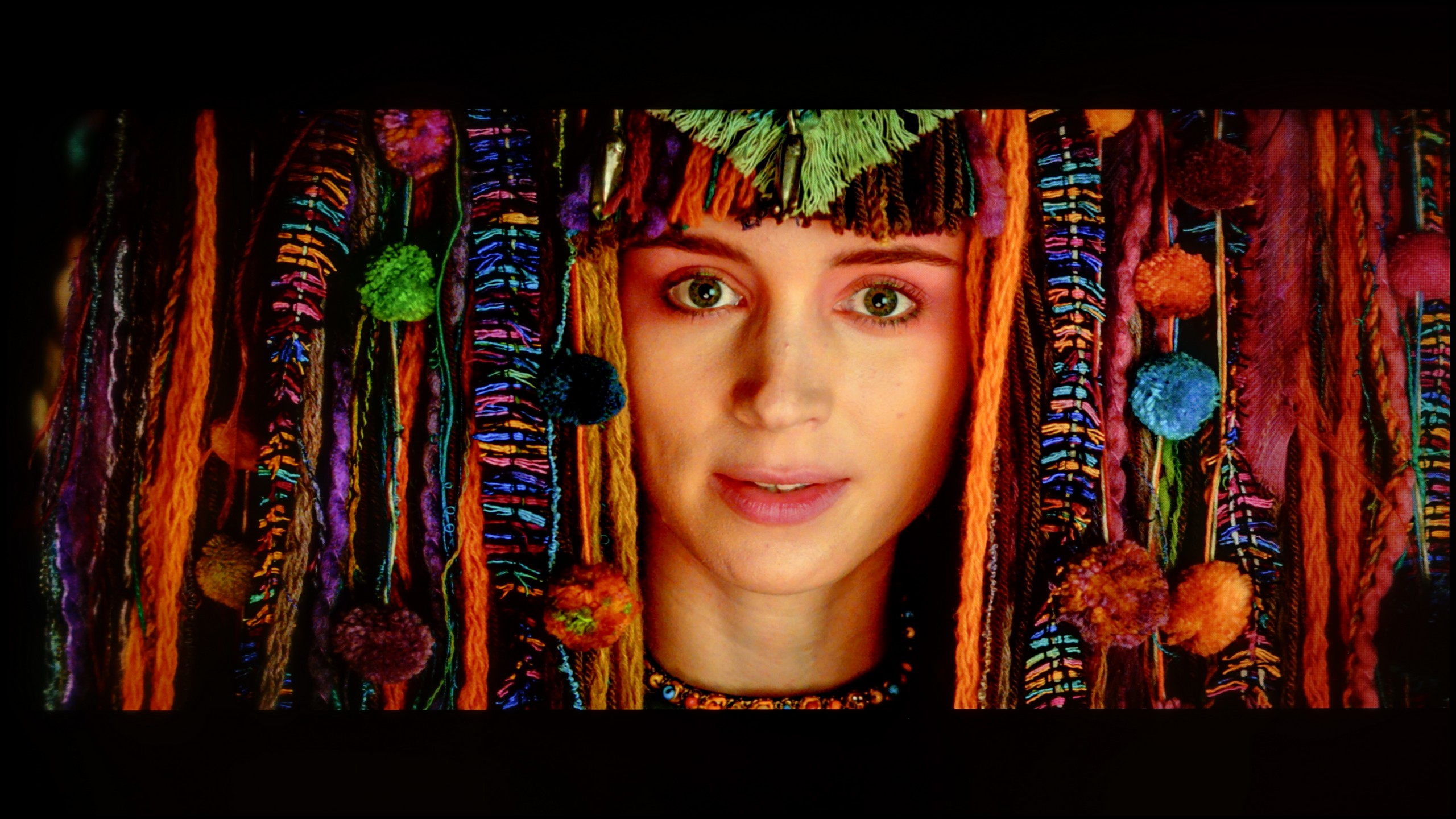
The Panasonic Z85A offers truly wide-ranging capabilities when it comes to picture settings, so we eagerly set about calibrating it. Although we mainly focused on adjusting the white balance, the final effect exceeded our expectations. Both HD and 4K HDR content now showcases nearly perfect colour reproduction, with minimal errors that are hard to catch with the naked eye. Well-calibrated TVs are a rarity, and we must admit – it’s truly satisfying. While the gamma and EOTF curve didn't require drastic adjustments, we managed to further stabilise their characteristics across the entire brightness scale. After calibration, the Panasonic Z85A is a true gem for home cinema enthusiasts. The picture is precise, the colours are natural, and every scene looks exactly as the director intended.
We have to admit that we didn't have much work with the LG B5. It's one of those TVs that look good right from the start, but after calibration… they can really impress. The white balance was nearly perfect – down to a level of errors invisible to the human eye, unless you're a professional colourist with a magnifying glass at the screen. We also managed to control the TV's tendency to slightly dim the darkest details, especially in HDR scenes. After proper tuning, everything looks cohesive: blacks remain deep but don't swallow information. Highlights maintain a natural sparkle, and colours are true to the director's vision. This is truly one of those models that show you don't have to spend a fortune to have an almost reference-quality image. If you can opt for professional calibration – it's definitely worth it for the B5.
Smoothness of tonal transitions
7.5/10
7.2/10

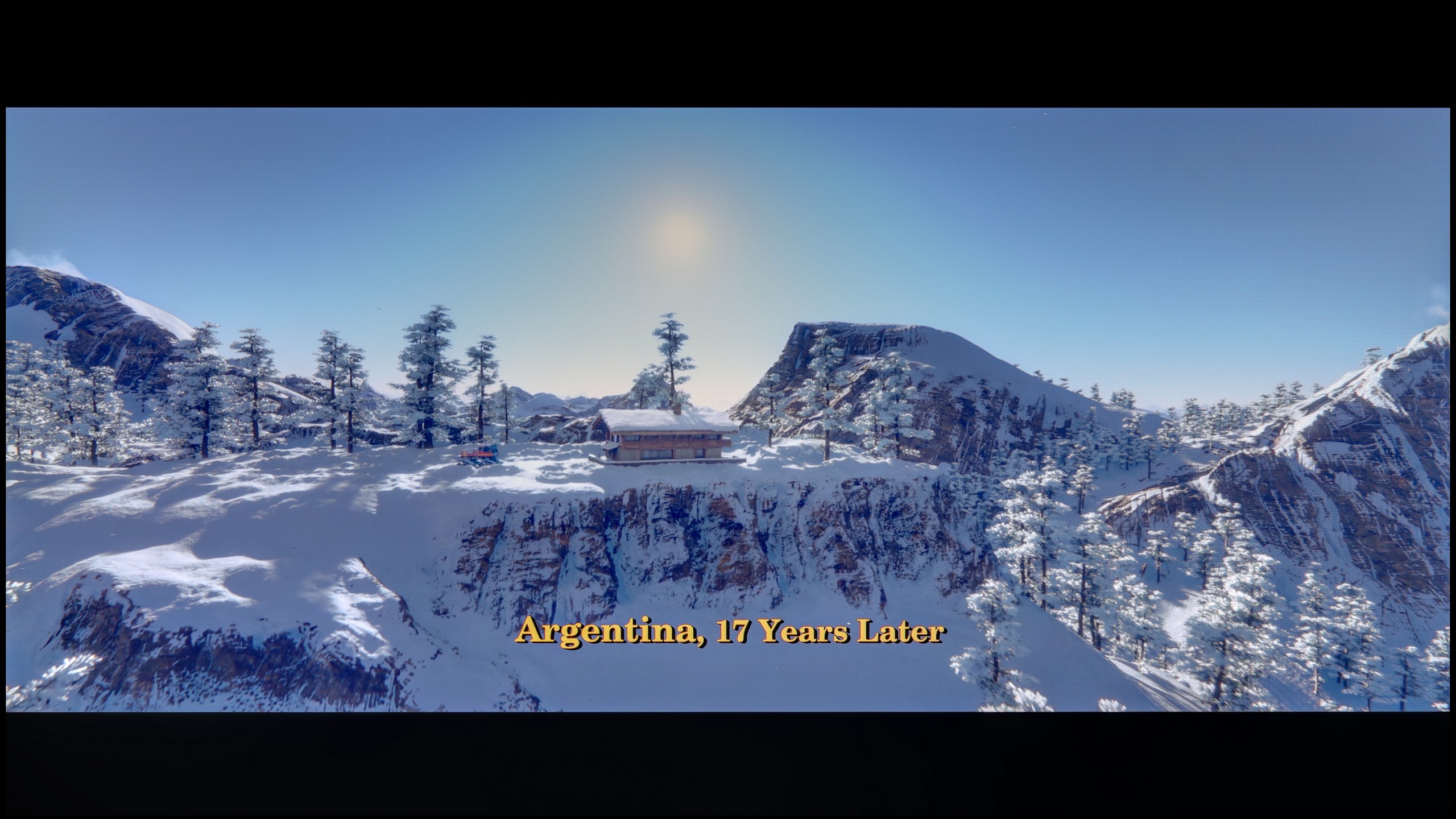



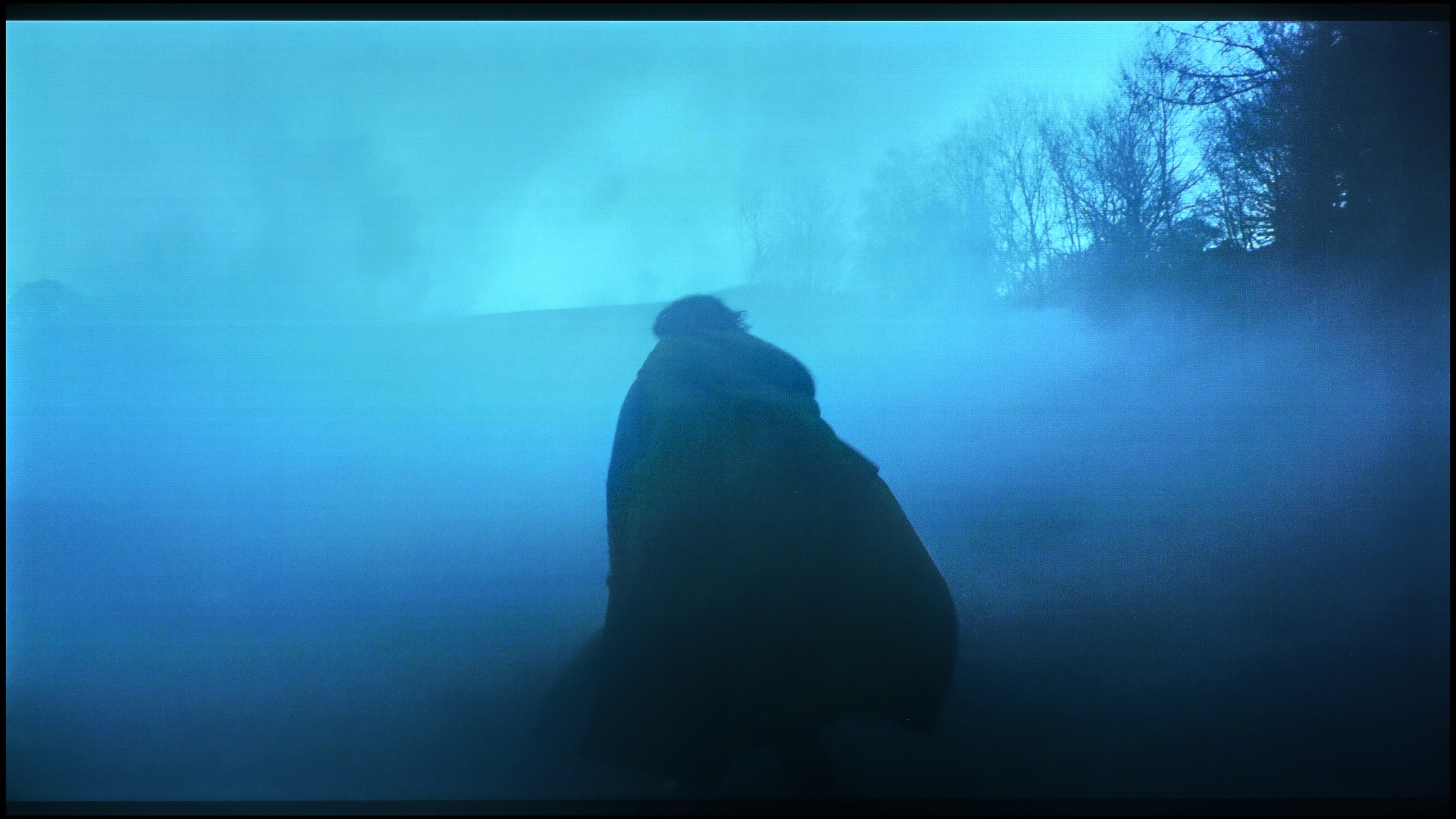

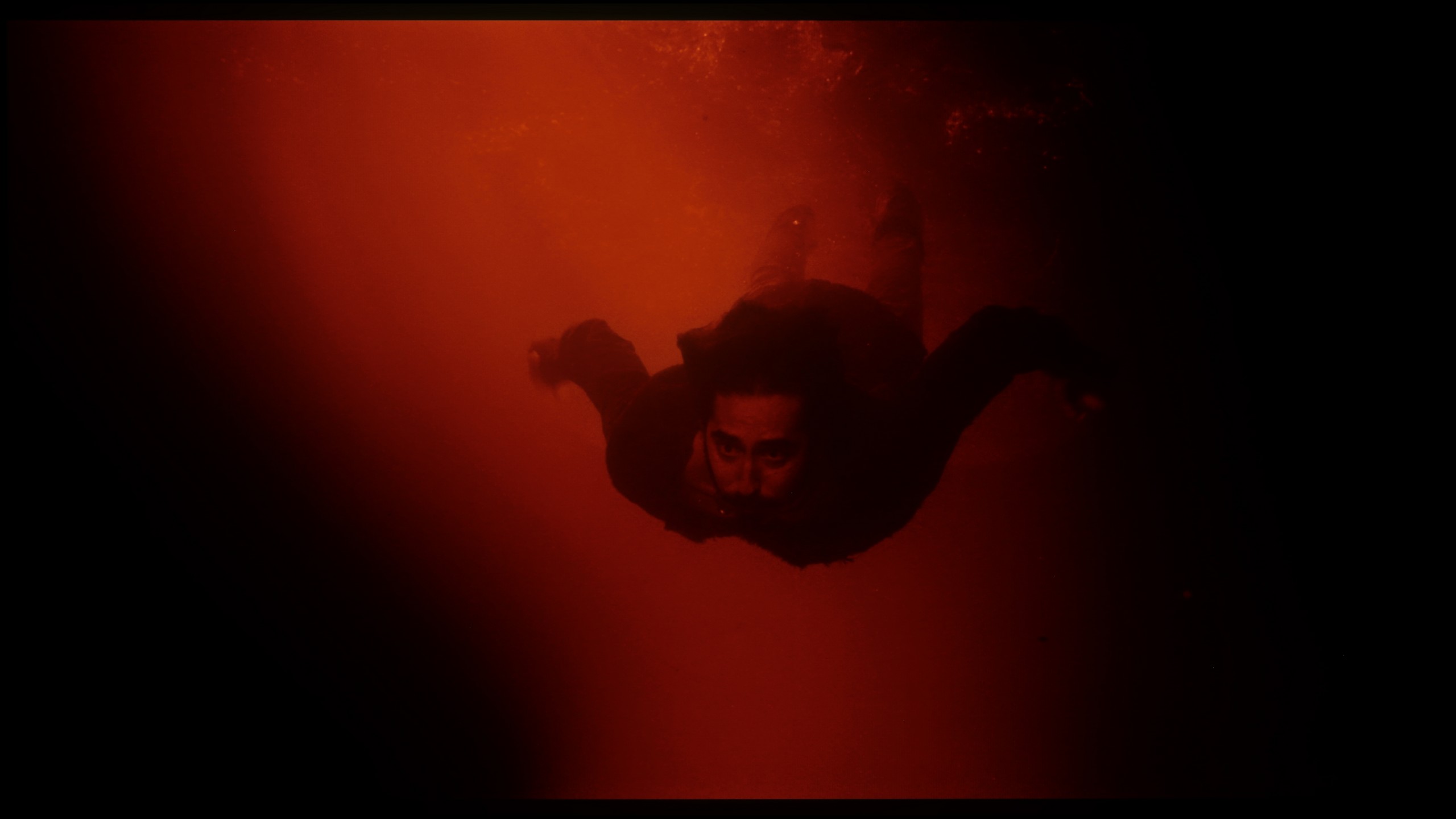




The Panasonic Z85A handles tonal transition fluidity really well. Colours blend naturally together without noticeable disruptions or visible bands. However, in brighter scenes, such as the opening sequence in the film Kingsman, slight imperfections can be seen. This is typical for WOLED panels, which have their limitations compared to Samsung Display's QD-OLED designs due to the use of white sub-pixels. The differences aren’t colossal, but a discerning eye will catch them, especially in more demanding scenes with subtle colour gradients. Despite these minor reservations, the Z85A presents a level that will satisfy the overwhelming majority of users. Tonal transitions are smooth, and the image maintains consistency even in complex scenes. This is a solid result that will rarely cause issues in everyday viewing of movies or series.
LG B5 handles colour gradation quite decently. In bright scenes, where we have smooth transitions between skin tones, the sky or background, the TV blends colours seamlessly and without hiccups. At first glance – it’s good, particularly considering the price. But just reach for more challenging material – those darker, more demanding scenes with a lot of subtle transitions – and the problems begin. Small artifacts appear, false contours, slight thickening. It’s still not at a level that blinds or distracts from the plot, but the difference compared to more expensive WOLED models – and even more so QD-OLED screens – becomes noticeable.
Image scaling and smoothness of tonal transitions
7.4/10
7.5/10
Smooth transition function

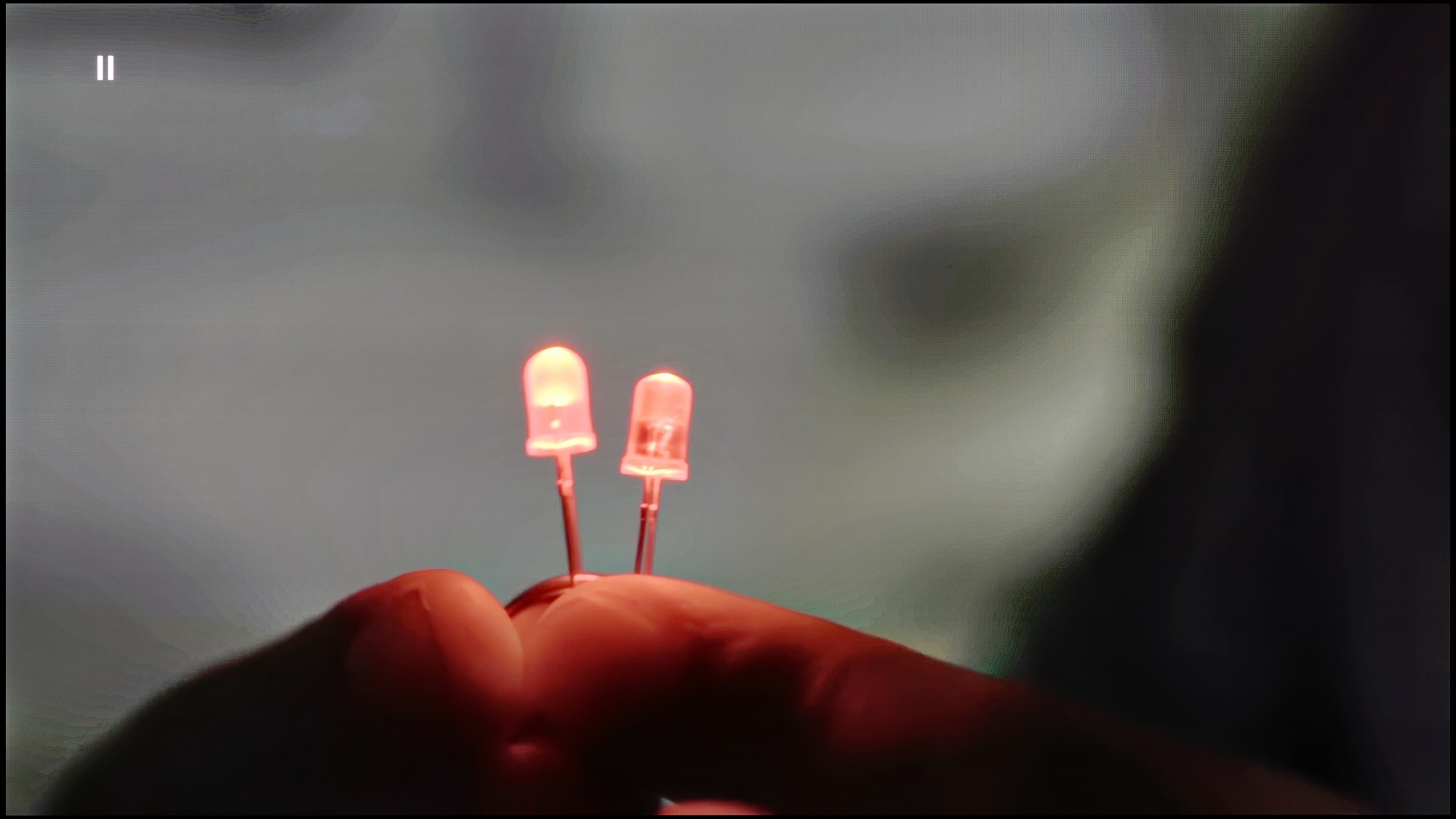
Image without overscan on the SD signal


Now that we know how the Panasonic Z85A handles tonal transitions in 4K material, it’s time to take a look at its "Gradation Smoothing" function. It works, but unfortunately not entirely effectively. Regardless of the chosen value – whether it’s low, medium, or high level – we couldn’t achieve perfectly smooth tonal transitions in our test sequence. We recommend setting this function to an intermediate level. While this may slightly blur fine details, at least it avoids the problem of losing film grain, which can be crucial for many viewers when watching classic productions.
When it comes to image scaling, the TV performs quite well. It’s noticeable that the image is slightly sharpened, and thin lines can sometimes appear a bit jagged. However, this is standard for most TVs, and fortunately, it can be adjusted using the sharpness slider. This gives us full control – we can achieve a more vivid, blurred image or a clearer one, although it may appear more "harsh" and artificially sharp. It all depends on the user's preferences and the type of content we’re watching. Overall, the scaling is at a solid level and should satisfy most users who are using lower resolution material.
LG B5 really surprised us positively in terms of handling lower quality content. Thanks to the enhancement and smoothing features, HD or even SD materials come to life. Importantly – when this option is turned on at the "low" or "medium" level, we don’t get the impression that the image is artificially softened or overly smoothed. Details remain in place, film grain doesn’t disappear, and the edges of objects don’t look washed out 😉. It’s a really useful tool – especially if you’re watching free-to-air TV, archival materials, or content from YouTube in lower resolutions. The picture is clear, consistent, and simply pleasant to the eye.
Upgrading as such works very well – even low-quality content is reproduced with surprising fidelity. Unfortunately, it’s not without a minor hiccup. Although the menu has an option to turn off overscan, the television still has issues correctly displaying very low-resolution images. It’s a minor detail, but when watching older materials – it can be annoying.
Blur and motion smoothness
8.5/10
8.5/10

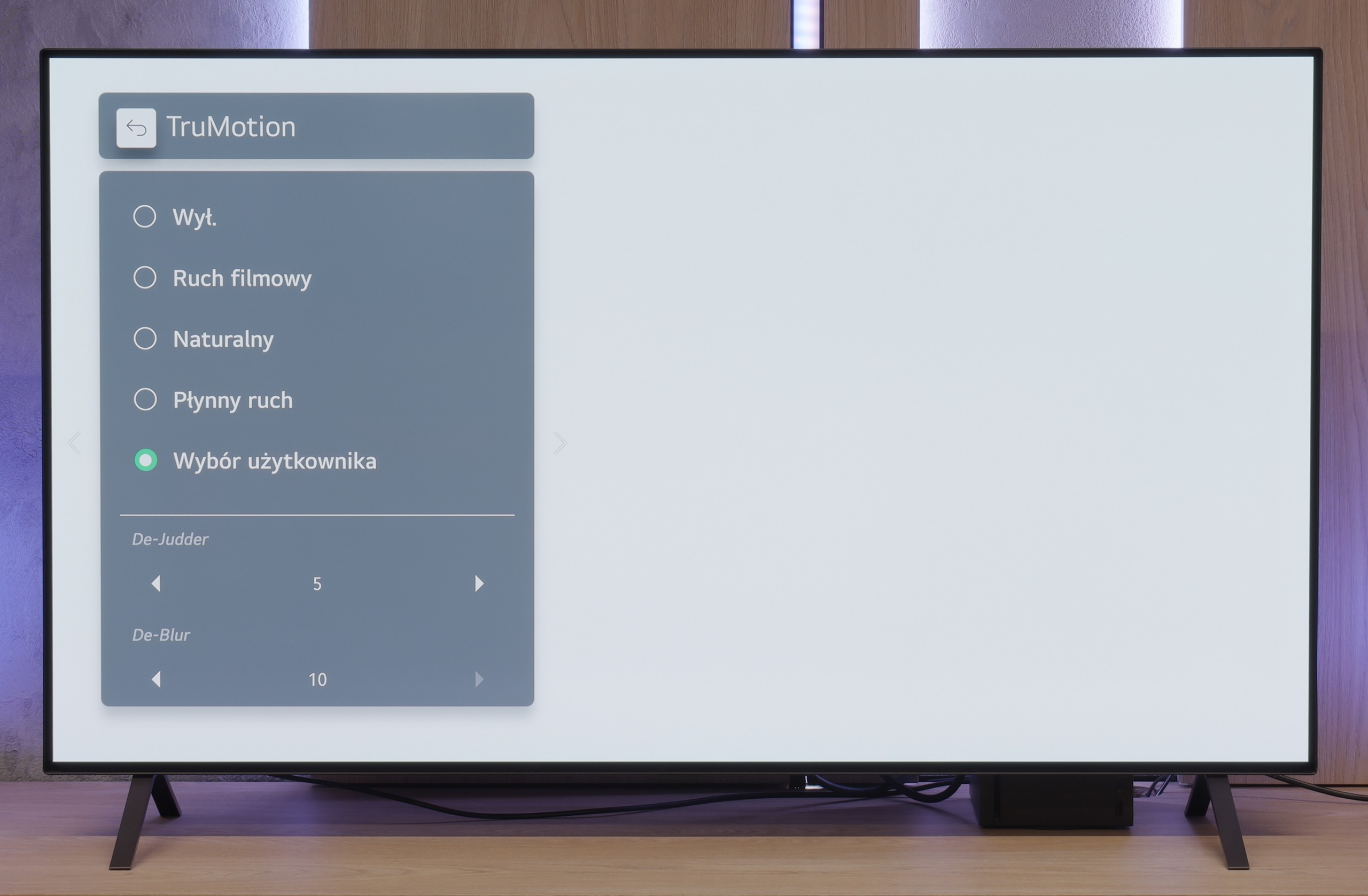
Blur (native resolution, maximum refresh rate):



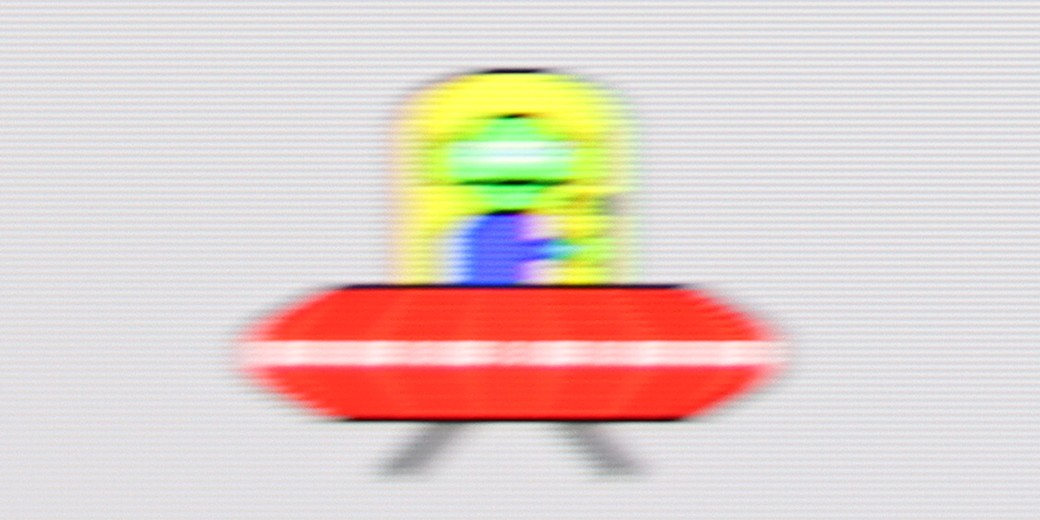
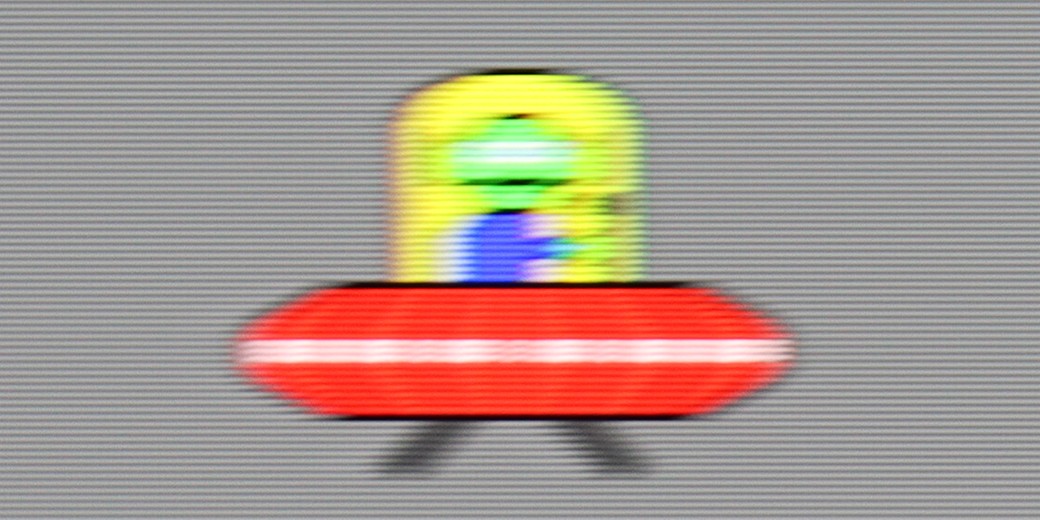

The Panasonic Z85A features a 120 Hz panel, which will surely please both gamers and sports fans. Sure, it’s not 144 Hz like some gaming TVs, but in practice, the difference is really hard to notice. In games, the picture is stable and sharp, and during fast action, there’s no sign of any blurring. The same goes for sports – a player’s quick run or a car’s dynamic maneuver looks smooth and natural. The TV also has an “Intelligent Frame Creation” feature, which is a motion smoother. There are two sliders here – one controls motion blur reduction, while the other adjusts motion smoothness. With these, you can tailor the picture to your own preferences – whether you prefer a more cinematic effect with gentle transitions between frames or a maximally smooth image ideal for watching sport.
LG B5 is a TV with a 120 Hz OLED panel. It may not sound as impressive as the marketing terms "144 Hz" or "165 Hz" commonly found in gaming monitors, but honestly? The smoothness is still excellent. The picture is sharp, fluid, and simply enjoyable to watch – even when there’s a lot happening on screen. The organic panel does its job – the pixel response time is almost instantaneous, which means there’s no risk of ghosting or blurring that can ruin dynamic shots. Sports, fast-paced games – everything looks clear and distinct.
We also have the classic LG motion smoother, TruMotion. It allows you to smooth out movies shot at 24 frames – in other words, most of what you watch on Netflix or from Blu-ray discs. If you set lower values on the “De-Judder” slider, you’ll get a picture closer to the cinematic experience – with a slight judder, but without artificiality. Higher settings? Soap opera effect guaranteed. Fortunately, LG gives you the choice, and you can tune everything to your liking.
Console compatibility and gaming features
10/10
10/10
- ALLM
- VRR
- VRR range40 - 120Hz40 - 120Hz
- Dolby Vision Game Mode
- Correct implementation of HGIG
- 1080p@120Hz
- 1440p@120Hz
- 4K@120Hz
- Game bar

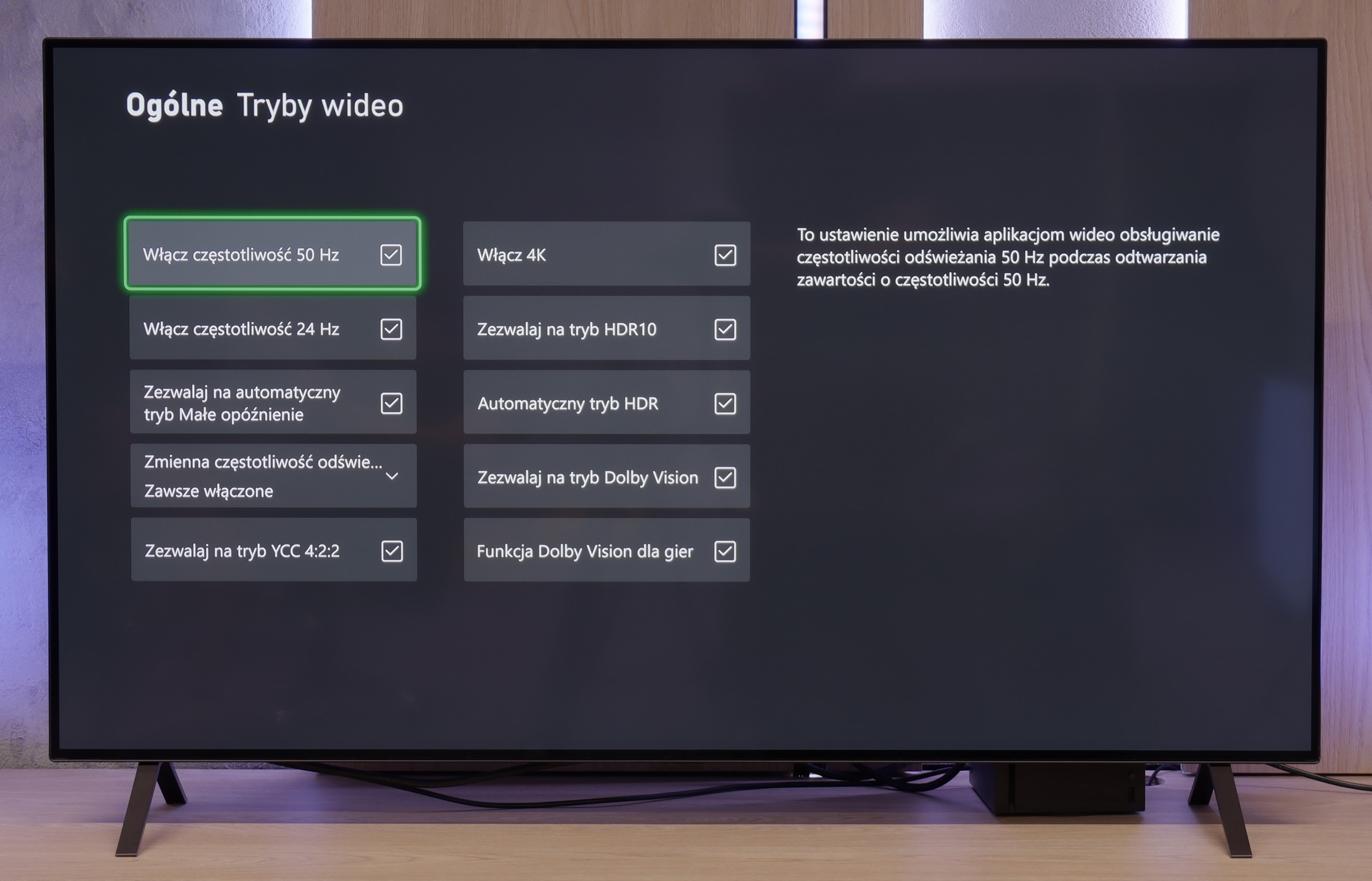

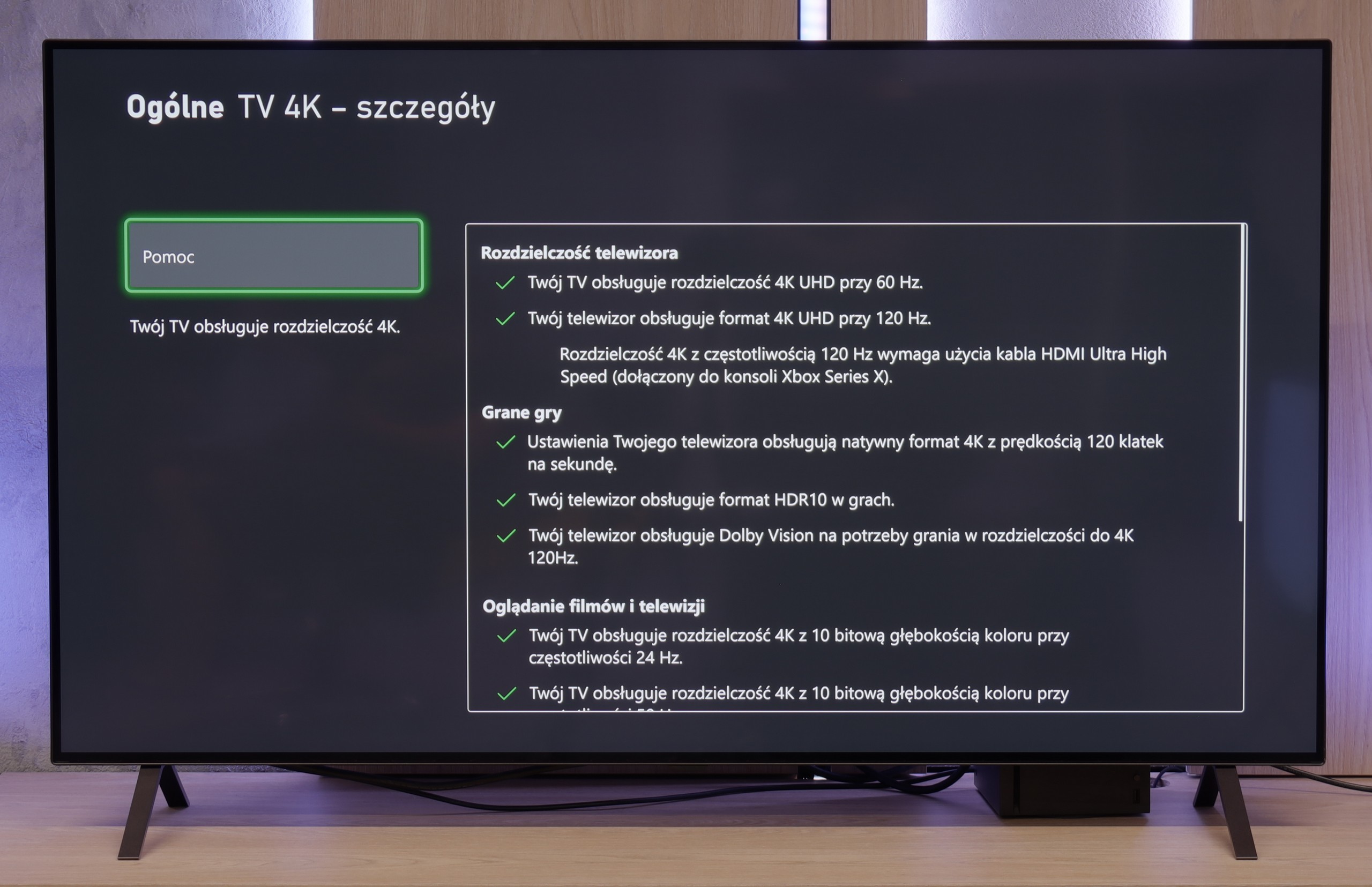

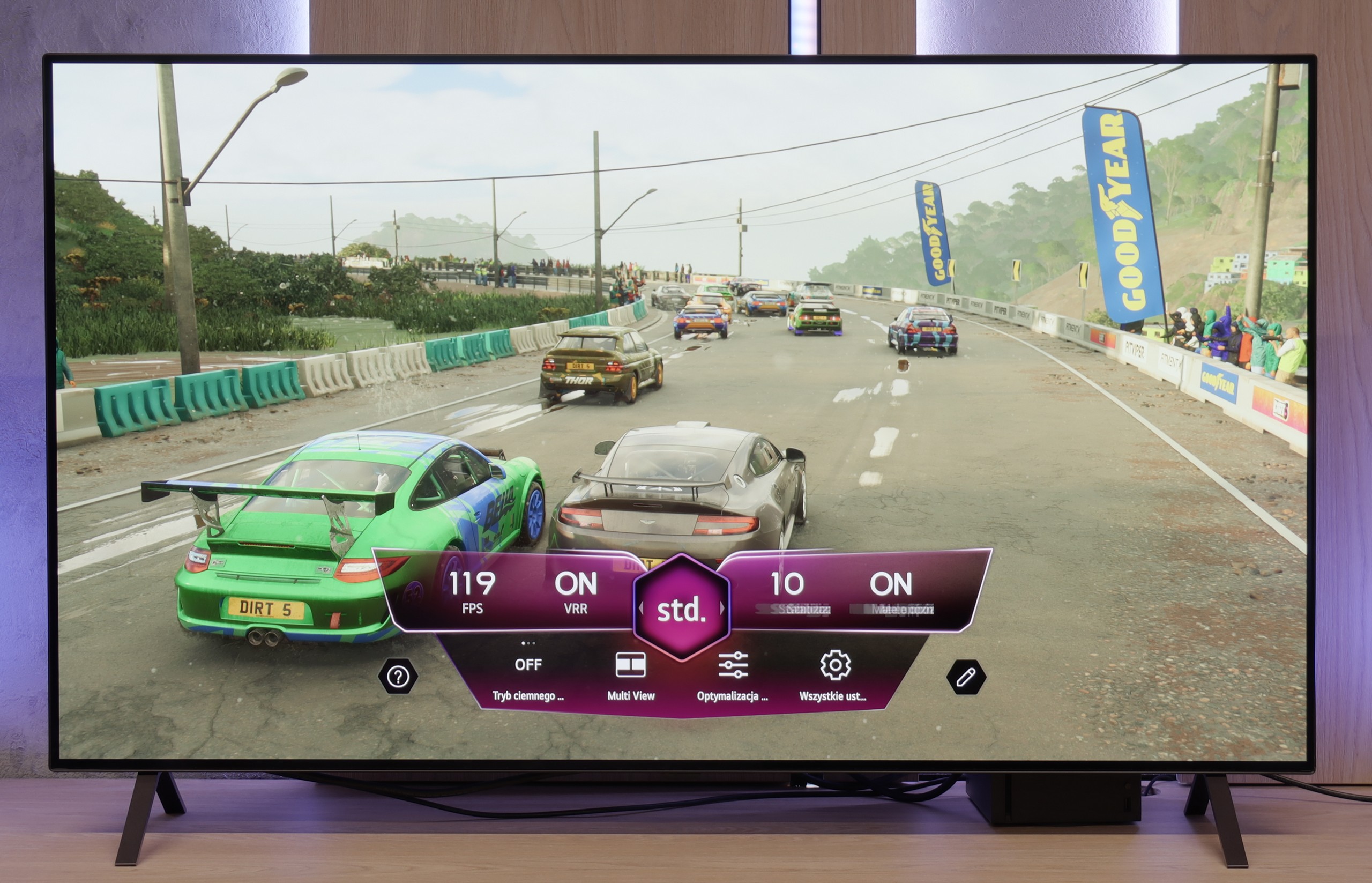

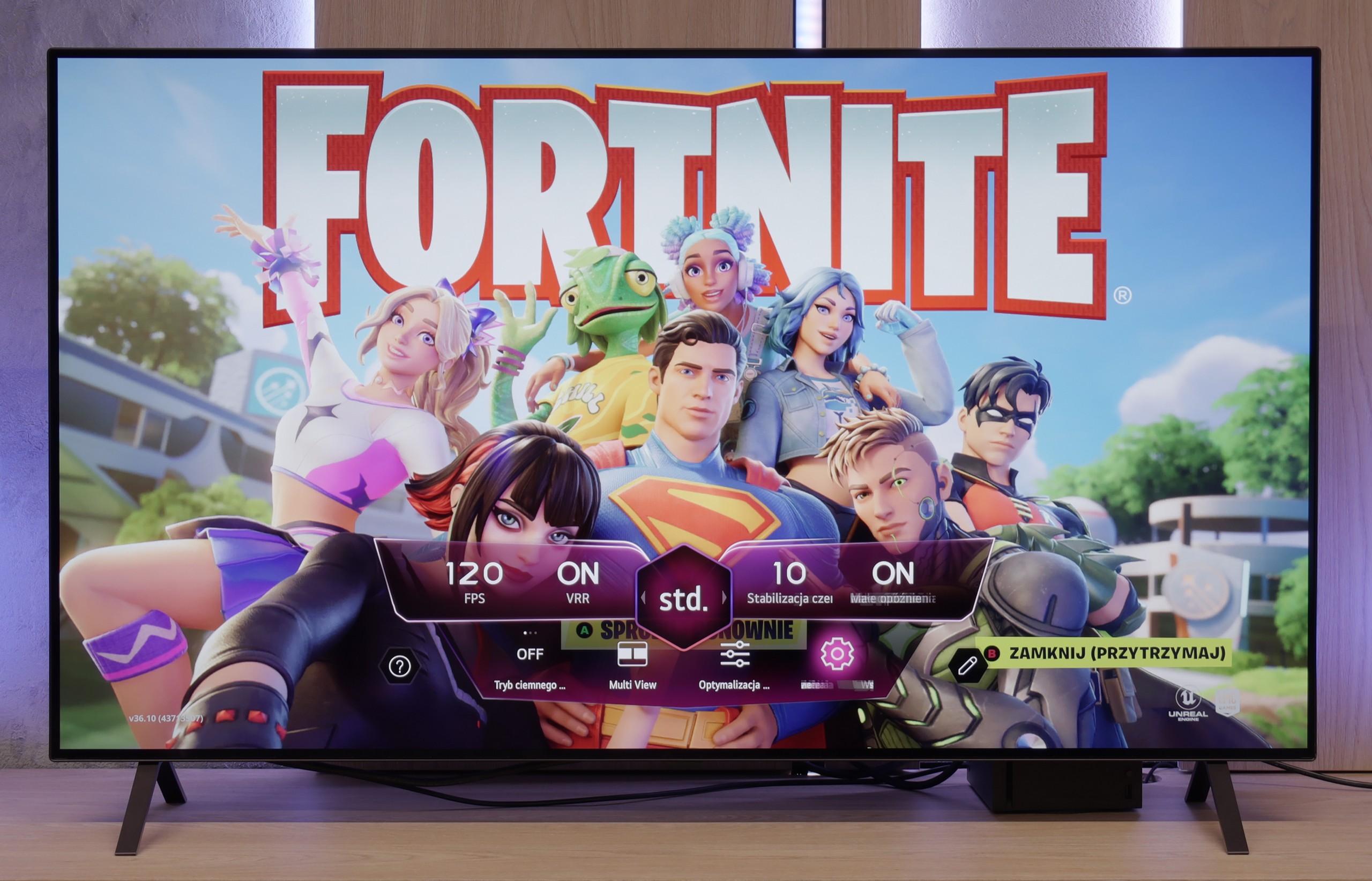
Panasonic is mainly associated with home cinema televisions, but the Z85A shows that it can also step into the gaming world with a truly strong punch. It's a device that can easily be called a gaming beast – it has everything needed for comfortable gameplay.
Even though it has only two HDMI 2.1 ports, both operate at full bandwidth, so we can easily connect both a next-gen console and a gaming PC. All the key features are supported: ALLM automatically switches the television into game mode, VRR provides smooth visuals without stuttering and tearing, and with properly implemented HGIG and Dolby Vision, HDR games look really good – colours are vivid, details are sharp, and dark scenes are clear. We also find a Game Bar in the form of a transparent, circular menu. It may not look as impressive as the competition's, but it's intuitive and includes all the most important settings we’d want at hand during gameplay.
In summary – the Panasonic Z85A is a device that truly surprises with its gaming capabilities. It's a television where both console gamers and PC gamers will feel at home. It's smooth, dynamic, and just good.
There are already a few TVs on the market with the "for gamers" label that don't really understand what that means. The LG B5 is not one of them. Everything here is spot on – there are four HDMI 2.1 ports, 120 Hz, there’s VRR and ALLM, and there’s also a Game Bar that's actually useful, not just looking good in the brochure. You plug in a console – it works. You set it to 4K at 120 Hz – it works. You have an Xbox and want to play in Dolby Vision – it works too. And it's not just "theoretically supports," it actually turns on, looks good, and you don't have to fiddle with settings for half an hour. Plus, there’s the HGiG picture mode, which LG has implemented correctly – meaning HDR in games doesn't turn the screen into a strobe light, but shows exactly what it should. There are no surprises, no strange limitations, no "buts." And you know what? That's how it should be. Cheers to the LG B5!
Input lag
10/10
9.9/10
SDR
HDR
Dolby Vision
Since the Panasonic Z85A has also been designed with gamers in mind, the input lag had to be refined. And indeed – the results are really excellent. At 120 Hz, the lag is just 5 ms, and at 60 Hz it's 13 ms. These are values that will satisfy even the most demanding gamers, whether we're talking about fast-paced shooters or precise fighting games. The responses to our movements on the controller are practically instantaneous, and the gameplay is smooth and responsive. Importantly, the Dolby Vision mode also works perfectly here. Just a few years ago, using Dolby Vision in games often came with high input lag, but in the Z85A, this problem has been effectively eliminated.
Here we won’t be going on about it – the LG B5 simply has great input lag. For 60 Hz content, it achieves results below 10 ms, and for 120 Hz it even drops to around 5 ms. These are values that can’t be reasonably criticized. It just works instantly, without delays, without surprises. Well... almost. Because as usual, there’s a slight asterisk with the Dolby Vision Gaming mode. In this mode, the response time slightly increases. It's nothing dramatic – they’re still very low values, likely unnoticeable while gaming – but if you’re only playing tournament titles and fighting for every millisecond on your XBOX, it’s worth keeping in mind.
Compatibility with PC
7.6/10
7.6/10

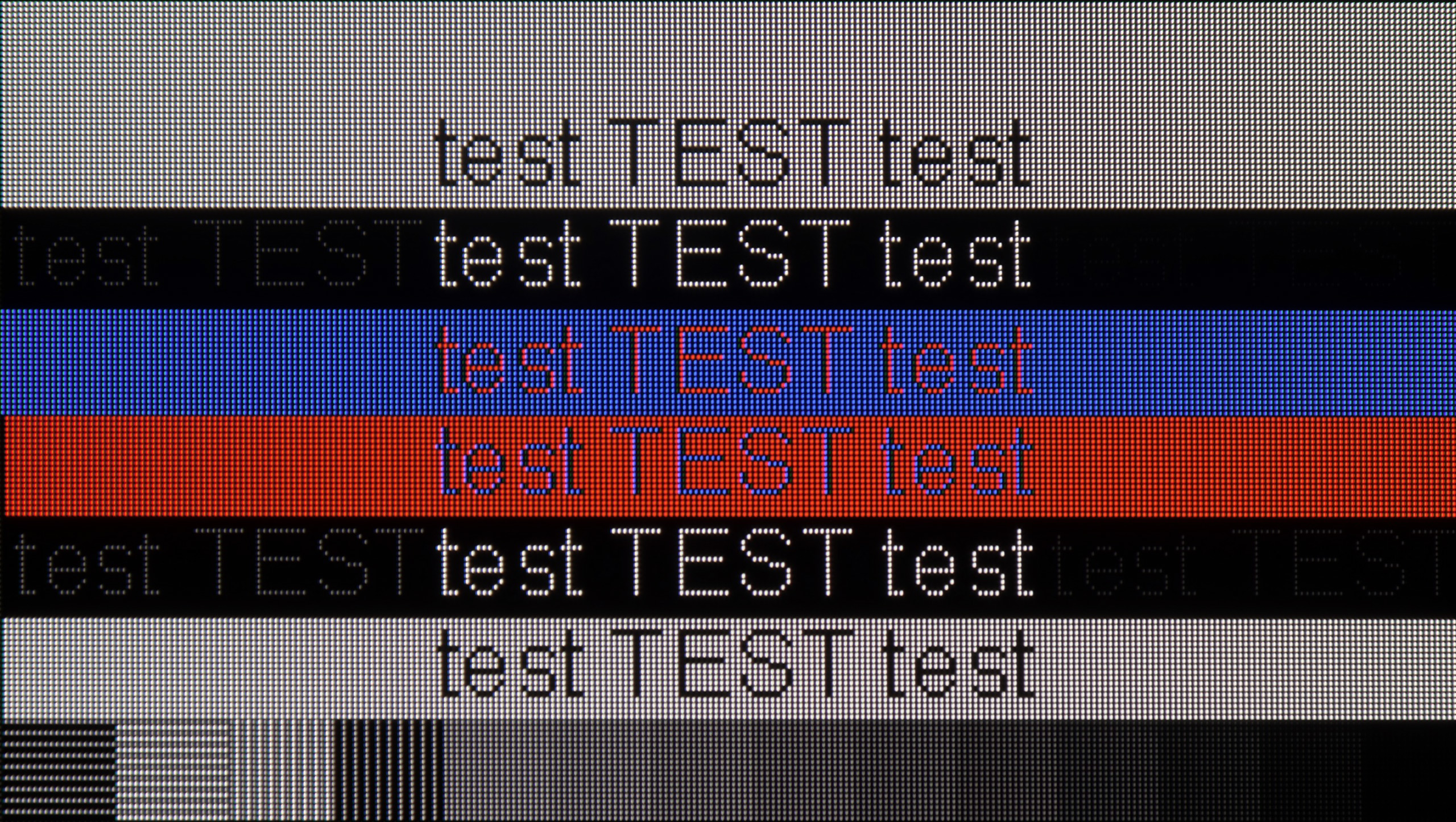
Using the Panasonic Z85A as a computer monitor performs really well. The text is readable and clear, making web browsing or working with documents not a major issue. However, one must keep in mind certain limitations of the WOLED panel – the characteristic way of displaying fonts may be bothersome for more demanding users, especially those who spend long hours working with text. In terms of gaming on PC, the television performs just as well as it does with consoles. Low input lag, 120 Hz refresh rate, and proper implementation of G-Sync and FreeSync ensure a smooth and responsive image without annoying stutters or tearing.
LG B5 is a television that communicates well with a computer. You won't find gaming features like 144 or 165 Hz here, but is that really necessary for anyone? Thanks to the 120 Hz panel, low input lag, and G-Sync support, it's actually a very good screen for gaming on PC. No stuttering, no tearing, with instant response.
But it's not just for gaming. The B5 can also be quite comfortable for... simply working. The television correctly supports chroma 4:4:4, so fonts are legible, interfaces are clear, and your eyes won't hurt from blurry text. This isn't obvious, even among more expensive models. However, there is one "but" – and this applies not only to the B5, but to every OLED with a WOLED panel. The RWGB subpixel arrangement can cause a slight shadow at the edges of fonts. This isn't something that stands out from the couch. It's more likely to be noticed by someone sitting close to the screen and spending half a day in Excel.
Viewing angles
7.4/10
7.4/10
The viewing angles on the Panasonic Z85A are really good – after all, it’s OLED. Whether we’re looking at the screen straight on or at a steep angle, the colours remain vibrant, and the contrast hardly loses quality. Of course, the Z85A falls slightly behind TVs with MLA micro-lenses or Samsung's QD-OLED panels, which currently set the highest standard in this respect. However, the differences are subtle enough that most users won’t notice them during regular viewing.
In terms of viewing angles, the LG B5 performs very well – exactly as you would expect from a WOLED panel. No matter from which side you sit, the picture retains its quality. Colours don't fade, contrast doesn't drop off sharply, and details remain clearly visible. However, it must be honestly added that this is not the level of QD-OLEDs from Samsung Display. Those manage to hold colour saturation even better under extreme angles. But if you don't plan on watching films while sitting at a 90-degree angle – the B5 is more than sufficient. It's one of those TVs that is just pleasing to look at – from any side.
TV efficiency during daytime
4.8/10
4.9/10

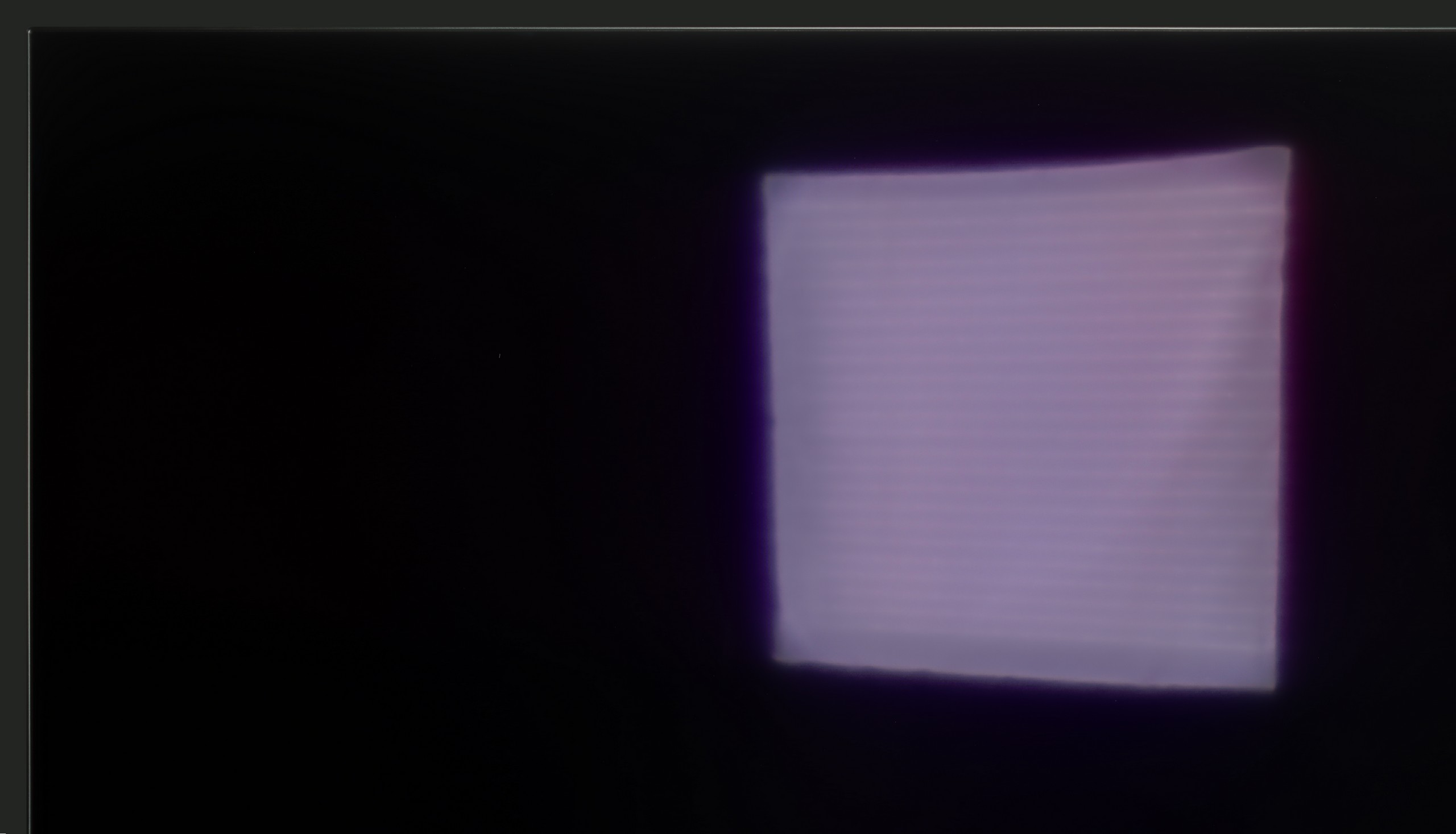

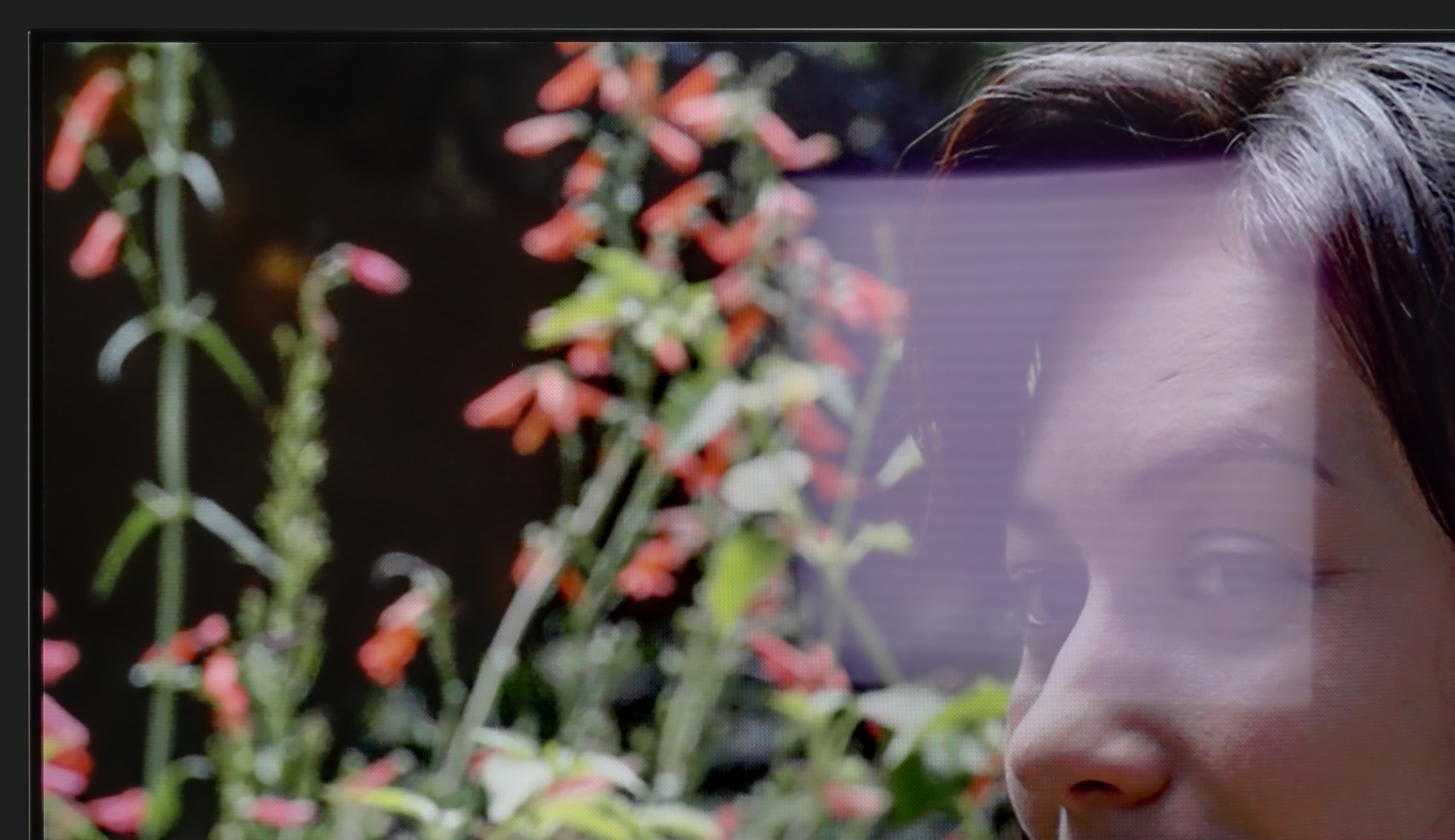
Matrix brightness
Average luminance SDR
LG OLED B5: 279 cd/m2
Panasonic Z85A: 286 cd/m2
The Panasonic Z85A leaves a bit to be desired during the day. The panel, although satin finish, mediocrely suppresses reflections, which can be noticeable in bright rooms. The reflections are not excessively visible, but there is one catch – they take on a bluish hue. In some situations, especially in strong daylight, this can be slightly annoying and distract from the content on the screen. On top of that, the maximum brightness is just under 280 cd/m². That’s simply not enough to comfortably watch TV in a heavily sunlit room. If you plan to watch in the middle of a sunny day, you’ll need to close the windows to ensure the picture looks good.
The LG B5 is a television that feels best after dark. But when the sun comes in, it becomes a bit of a challenge. The brightness of this model is rather average, and the anti-reflective layer… also average. There are no special coatings here that deal well with reflections or very bright daylight. So if you're planning to place this television opposite a large, uncovered window – it may simply be hard to see anything.
Fortunately, there is something worth praising: the glossy WOLED panel maintains good colour saturation. Even in difficult conditions, the image doesn't fade or become "washed out," as can happen with some television models. In general, it's watchable, but if you're looking for a television specifically "for a bright lounge room," the B5 shouldn't be your first choice.
Details about the matrix
Subpixel Structure:

Panel uniformity and thermal imaging:

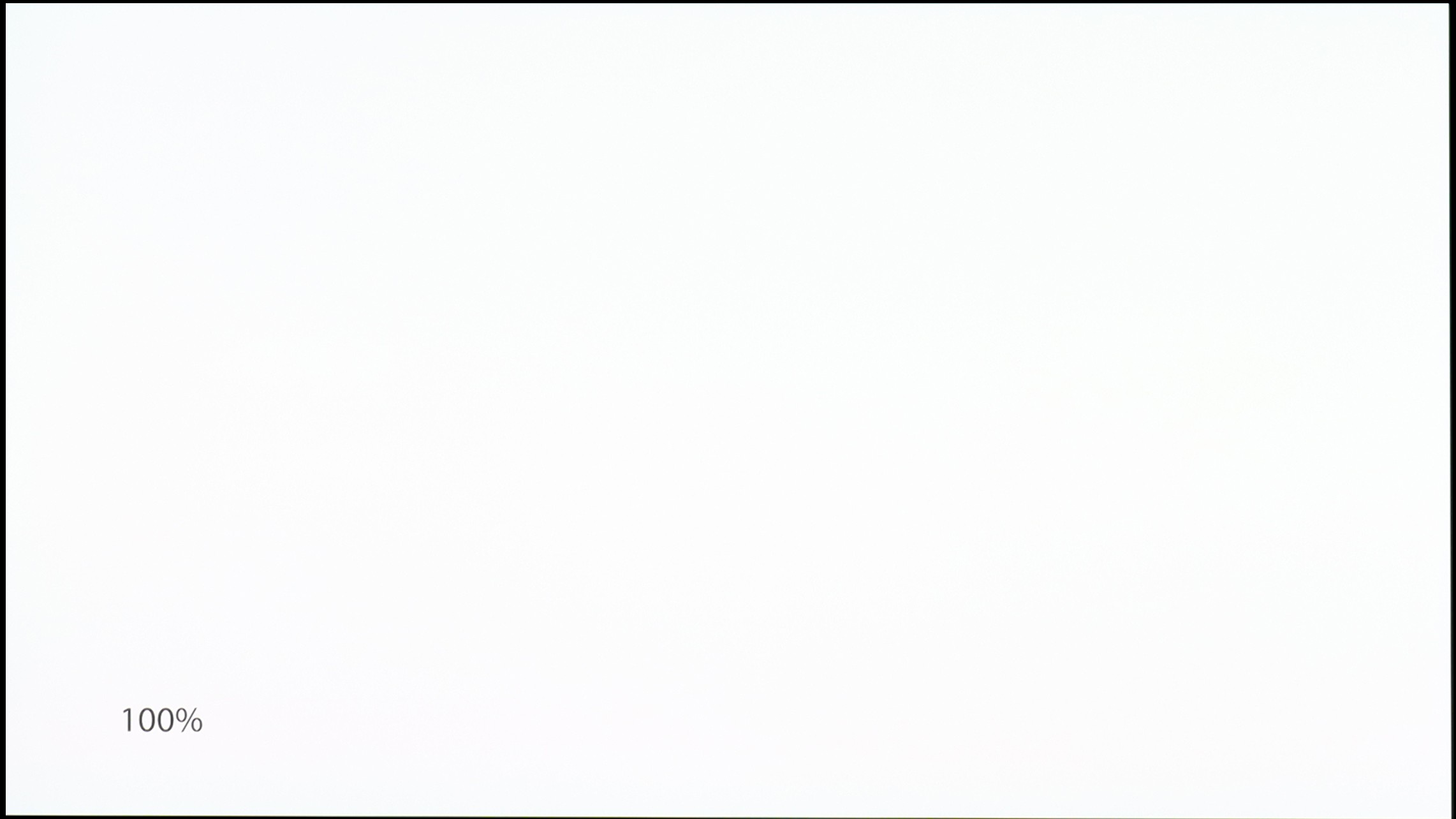
TV features
7/10
7.9/10
- HDMI inputs2 x HDMI 2.0, 2 x HDMI 2.1 48Gbps0 x HDMI 2.0, 4 x HDMI 2.1 48Gbps
- OutputsToslink (Optical audio), eARC (HDMI), ARC (HDMI), Mini-Jack (Headphones)Toslink (Optical audio), eARC (HDMI), ARC (HDMI)
- Network InterfacesWi-Fi 2.4GHz, Wi-Fi 5GHz, Ethernet (LAN) 100MbpsWi-Fi 2.4GHz, Wi-Fi 5GHz, Ethernet (LAN) 100Mbps
- TV receptionDVB-T, DVB-T2, DVB-S, DVB-S2, DVB-CDVB-T, DVB-T2, DVB-S, DVB-S2, DVB-C
Classic features:
- Recording to USB (terrestrial TV)
- Recording programming
- Picture in Picture (PiP)
- RF remote control (no need to aim at the screen)
- Backlit remote control
- Teletext
- Audio only mode
- Bluetooth headphones support
- Simultaneous Bluetooth headphones & TV audio
Smart features:
- AirPlay
- Screen mirroring (Windows Miracast)
- Wyszukiwanie głosowe
- Voice search in native language
- Ability to connect a keyboard and mouse


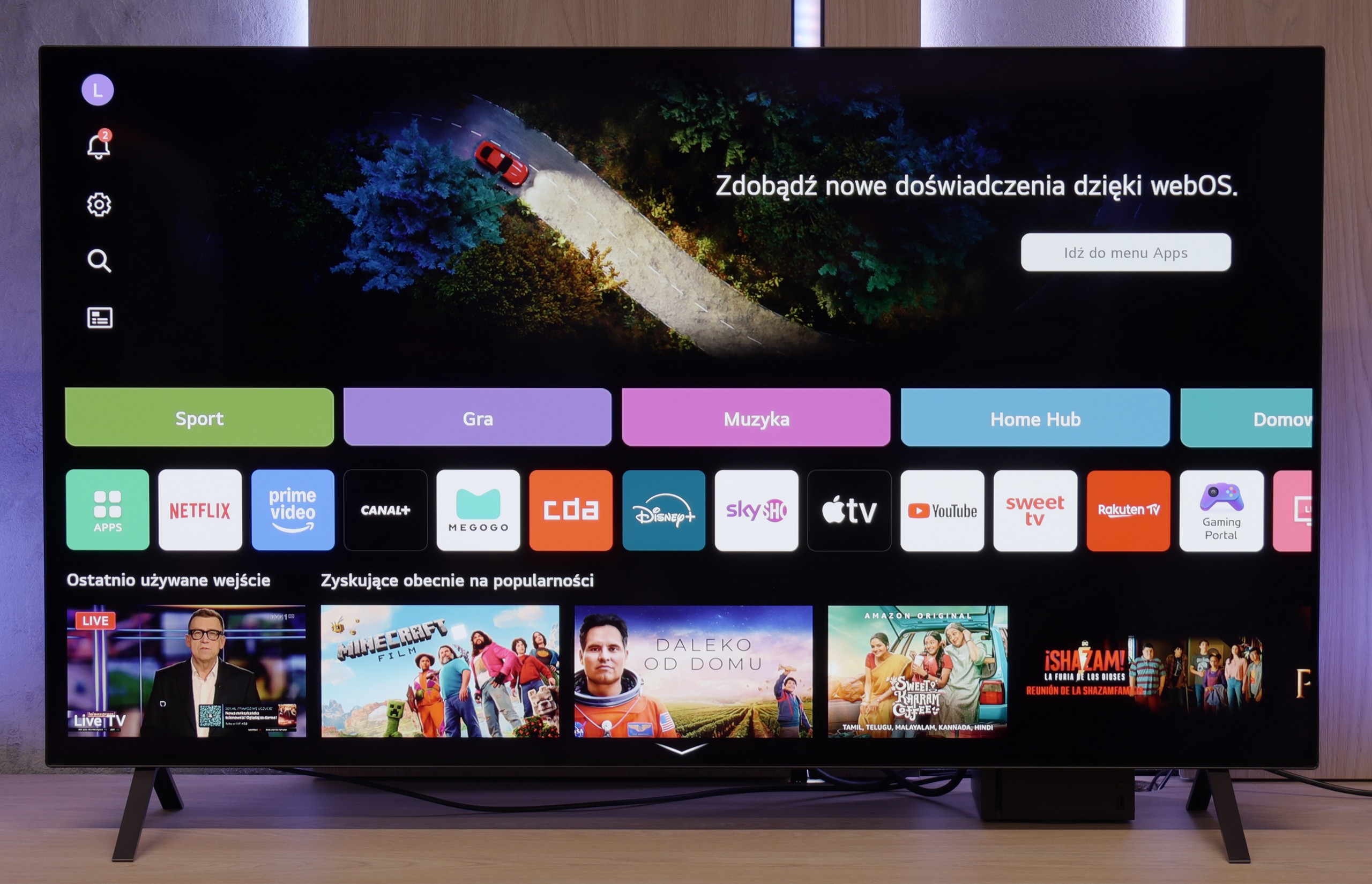
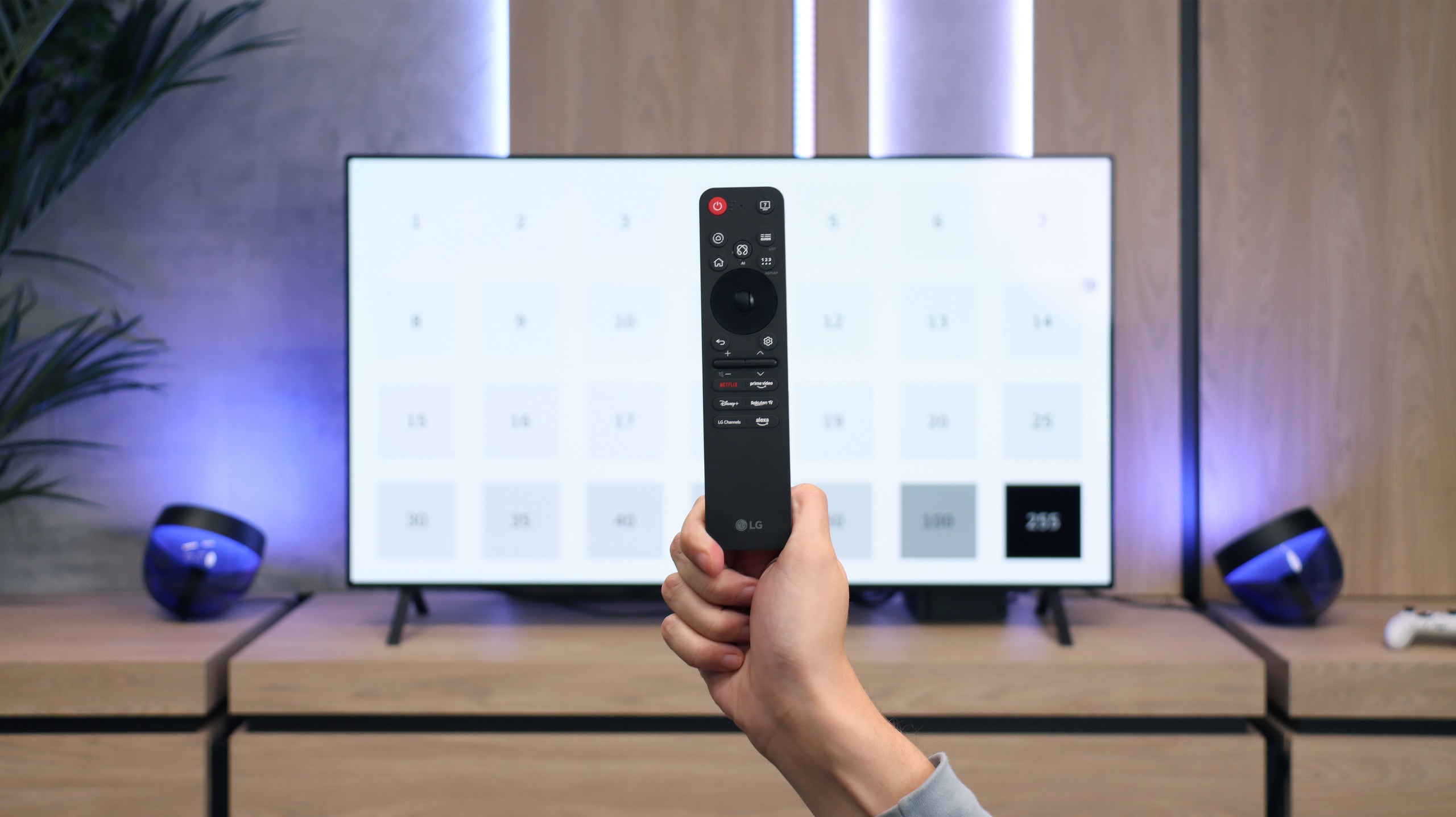
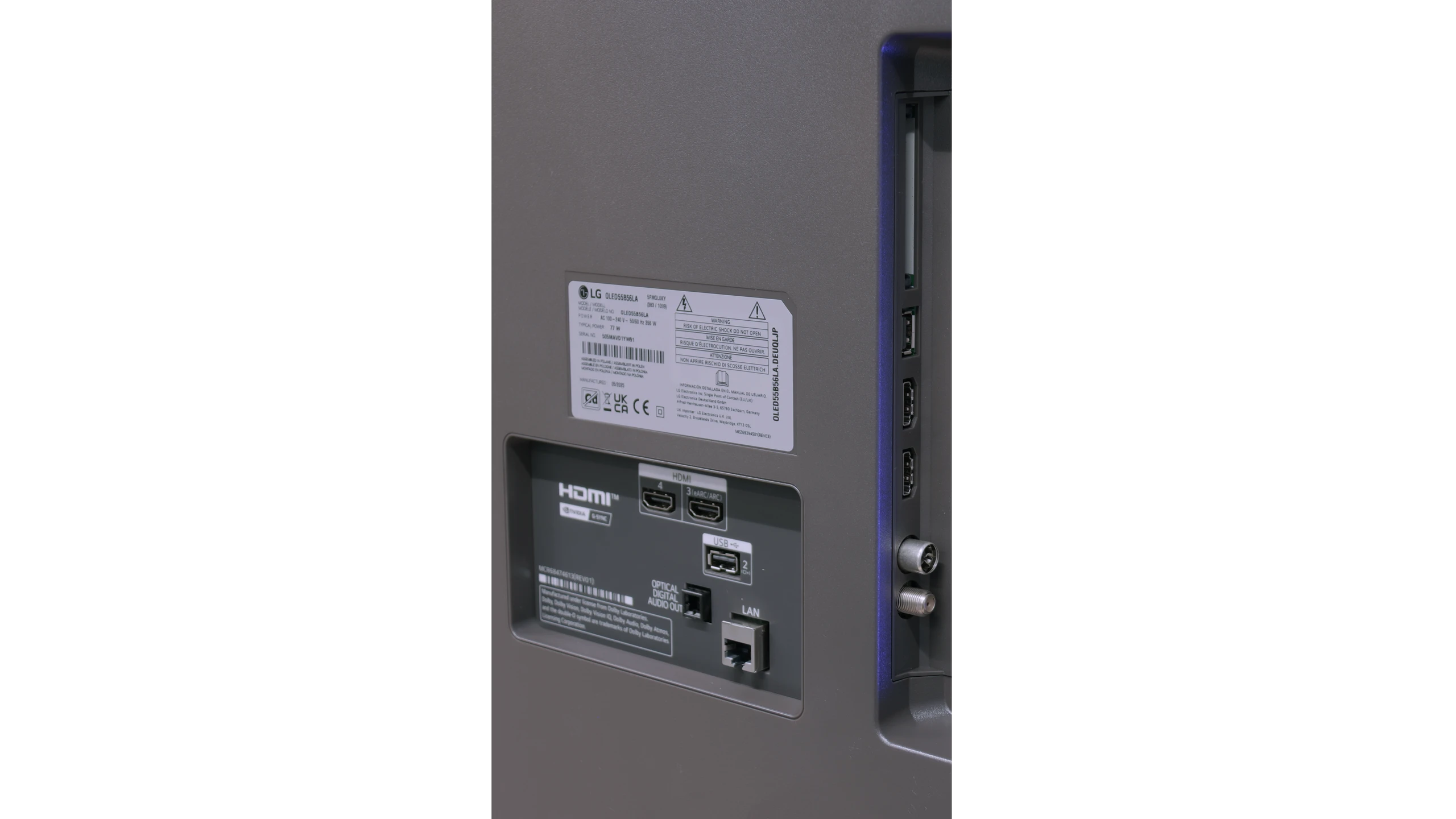
The operating system in the Panasonic Z85A is Amazon Fire TV, which is still a relatively new solution in the Australian market. Until now, we mainly associated it with portable smart devices, and now it is also arriving on televisions – similar to the flagship model Z95A.
On the plus side, the system operates smoothly and responsively. It is also quite intuitive, so navigation poses no major problems. Unfortunately, when it comes to the availability of applications, it's somewhat lacking. While the Amazon store does have icons for popular services like SkyShowtime, Rakuten, or Viaplay, they cannot be downloaded. This is a significant disadvantage for those who use these platforms regularly. Additionally, some functions are poorly translated, meaning that in certain areas, you have to guess what they are referring to. However, we believe that these are just growing pains and that over time they will be improved – both in terms of translations and application availability.
As for user features, things are much better. The television supports USB recording and the PiP (picture-in-picture) function. There is also support for AirPlay, which will certainly please users of Apple devices. It also has Bluetooth, but unfortunately, you cannot connect headphones to it – it only works with a keyboard or other controlling devices. Fortunately, you can connect headphones or a home theatre system via wired connection, which resolves this issue.
In summary – the Panasonic Z85A offers a solid set of user features that will perform well in everyday use. The Amazon Fire TV system is a step in the right direction, especially when compared to Panasonic's old system. However, at this time, it is difficult to praise it unequivocally. There is potential, but the manufacturer still has a lot of work ahead to ensure everything functions as it should.
Functional Features
Even though the LG B5 is modern equipment, it hasn’t forgotten those who simply want to... watch television. No apps, no accounts, no logging in anywhere. We have built-in DVB-T2 tuners and the ability to record onto USB, with a clear and fast EPG guide. Is that not enough? There’s even a working teletext – for many, surely a relic, for others, a daily occurrence. A plus is also the option to turn off the picture and just keep the sound, which works great for listening to music. And if you want to watch quietly – you can easily pair Bluetooth headphones, without wrestling with settings and without delays. Everything works as it should.
SMART TV: webOS
The biggest distinguishing feature of the webOS system – still! – remains the way you control it. The Magic remote, which we get with the LG B5 (in our version B56 – the one without the numeric keypad), works like a magic wand. We point, click, select. And it simply... works. Intuitively, quickly, and without unnecessary clicking left and right. Added to this is the AI voice assistant – quite efficient. You can summon it directly from the remote and use your voice to search for content, change settings or switch sources. WebOS may not be the most "modern" system on the market, and built-in ads can be annoying, but when it comes to ease of use – especially with the Magic remote – it still stays one step ahead of the competition.
Playing files from USB
3.1/10
8.6/10
Supported photo formats:
Maximum photo resolution:

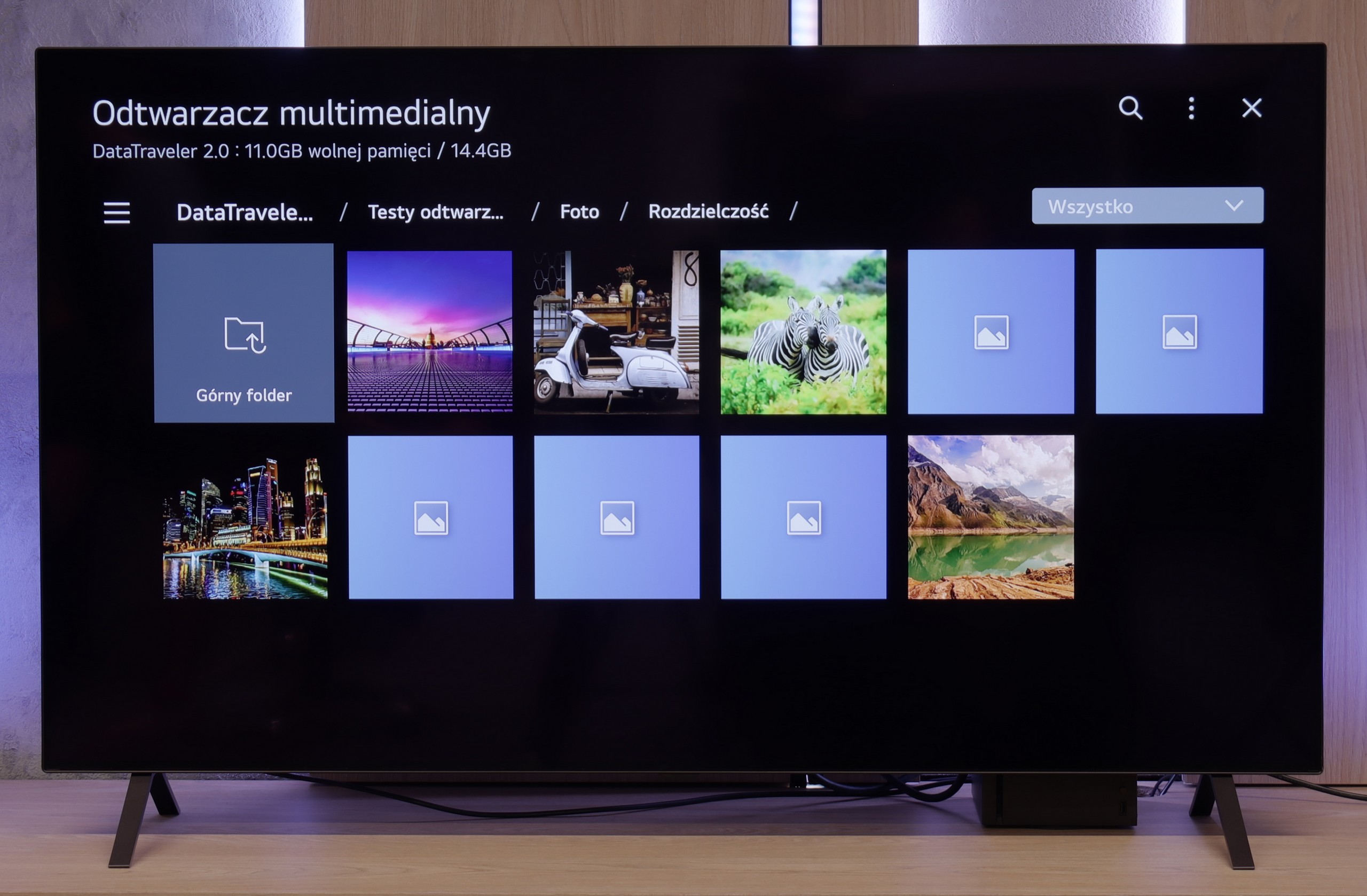
In terms of playback of files from USB, the Panasonic Z85A performs rather mediocrely. The built-in media player does handle most popular video formats, but it has one significant drawback – it does not support external subtitles. So, if we have older films on our drive or USB stick with separate subtitle files, we have to reckon with the fact that the television simply won't display them. This is quite a downside, especially for those who rely on their own media library rather than streaming services. Of course, this issue can be circumvented by using an external media player (e.g. via a console or Smart TV box), but it's an extra step that could be avoided if the built-in application were better developed.
LG B5 handles USB files as it should. Most popular formats work seamlessly, and subtitles – even with Polish characters – are displayed correctly. You can comfortably play a movie from a USB drive or have a weekend slideshow of your holiday photos without worrying that something will go wrong. However, there was a surprise with files in HEIC format – that is, photos saved by Apple devices. While the LG C5 had no issues with them, the B5 stubbornly refused to cooperate and was unable to display them. A little hiccup that probably won’t affect everyone, but it’s worth knowing about.
Apps
5.7/10
9.1/10














































Sound
7.4/10
7/10
- Maximum volume--
- Dolby Digital Plus 7.1
- Dolby True HD 7.1
- Dolby Atmos in Dolby Digital Plus (JOC)
- Dolby Atmos in Dolby True HD
- DTS:X in DTS-HD MA
- DTS-HD Master Audio
In terms of sound, the Panasonic Z85A is pleasantly surprising. The television delivers enjoyable and clear audio, and can generate noticeable bass that adds depth to both movies and music. The surround effect is also quite well reproduced, making watching films or playing games more immersive. Unfortunately, there is one “but”. The television does not support the DTS:X format, which is quite popular among more advanced home theatre systems. So, if we plan to use this audio standard, it will be necessary to connect the audio equipment first to the amplifier or soundbar, and only then to the television.
We didn't expect miracles – after all, the LG B5 doesn't have an advanced audio system, and its built-in speakers look... well, just like the majority of flat-screen TVs. And yet – it actually sounded quite nice. The dialogues are clear, the sound isn't booming, and during a quieter viewing, we didn't immediately feel the need to plug in a soundbar. It's just a shame that this year LG decided to cut something that worked in the previous generation. We're of course talking about support for DTS formats, which we won't find in the B5. If you have movies encoded in that format – you'll need to rely on an external player.


